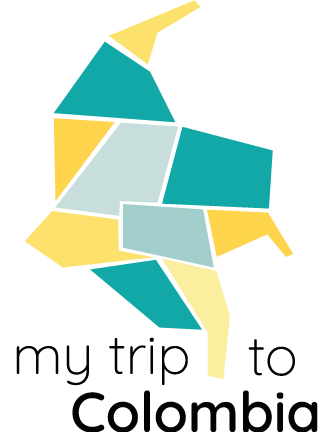Located 15 km from Villa de Leyva, the Iguaque Flora and Fauna Sanctuary is part of Colombia’s national natural parks. After 4 years of closure, Iguaque Park reopened to the public at the end of 2024. It marks the return of one of the most beautiful nature activities to do around Villa de Leyva.
High up, the Laguna de Iguaque is waiting for you — a mystical place full of history, considered the cradle of humanity by the Muisca civilization, and the origin of the legend of Bachué.
We did the two hikes open to the public there, and in this article, we’re going to tell you about our experience. You’ll see that we were surprised by the landscapes we discovered and by the unusual flora, different from anything we had seen in the mountains in Colombia until now.
Good to know
Colombia’s national natural parks
Since April 28, 2025, an official circular from Colombia’s national parks requires visitors to present a vaccination card to enter national parks in Colombia.
Important: Vaccinated individuals who do not have their vaccination card, or people who refuse vaccination, can sign a declaration stating their vaccination history, taking full responsibility in case of contagion, whether for themselves or for others.
Disclaimer: we apologize in advance for any grammatical or syntactic errors, as our native language is not English (we're a Colombian-French couple), so we hope you'll forgive us and still enjoy the information we share with you! Please note that all the information on our blog is based on our own experience, and is checked and updated regularly.
Content
Related posts
- Paramo de Oceta
- Sierra Nevada del Cocuy
- Visiter Raquira
- Visiter Mongui
We were fed up with paying fees abroad
So for several years now, we’ve been using a free bank debit card specially designed for travelers, and we don’t pay any more fees abroad – no more!
Exclusive 5% Off Discount For you
Best Travel insurance for Colombia
Our partner offers the best rates and a 5% discount for our blog readers! (regardless of travel dates)
Hike to the Laguna de Iguaque (Bachué Trail)
The route: distance, duration, difficulty
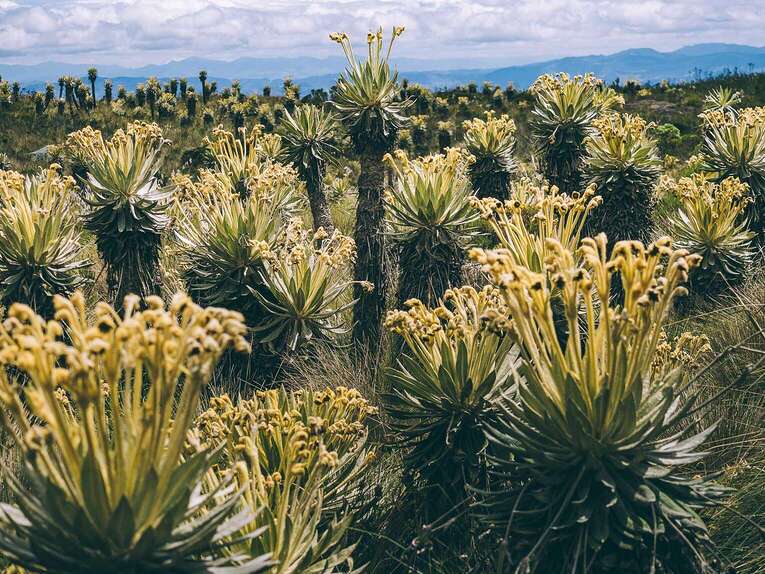
Iguaque means “Vigorous mountain” in the Muisca language.
And when you hike the Bachué trail, that meaning becomes very clear.
From the entrance center of Iguaque Park, the trail climbs gently through this Andean forest typical of the Colombian mountains until it reaches the lodging facilities (currently closed to the public).
From there begins the real “Bachué Trail” leading to the laguna, with around ten “stations” showing specific information about the ecosystems and the altitude.
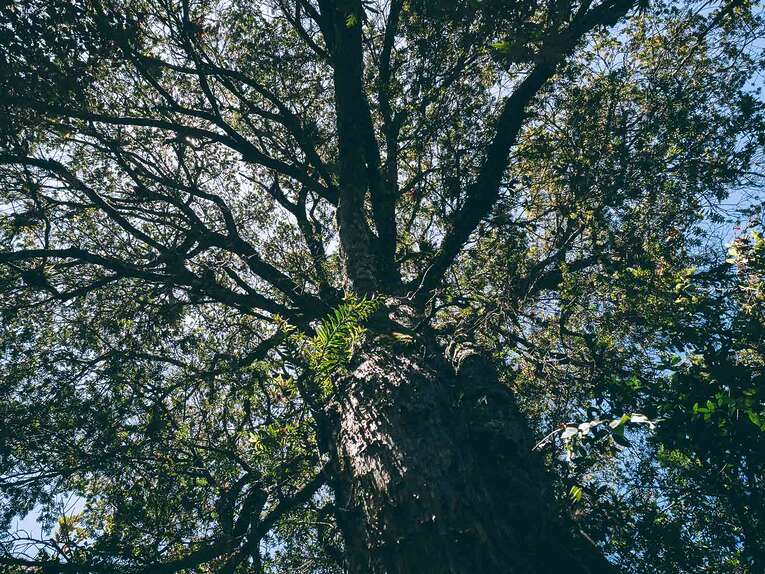
In this forest, you can observe a multitude of wild orchids, each one more surprising than the next.
Jacqueline, our guide, has a sharp eye for spotting the most invisible orchids!
It reminds us that Colombia is the country with the largest variety of orchids in the world.
Some flowers are really tiny, others much larger, but all have the same structure so typical of orchids.
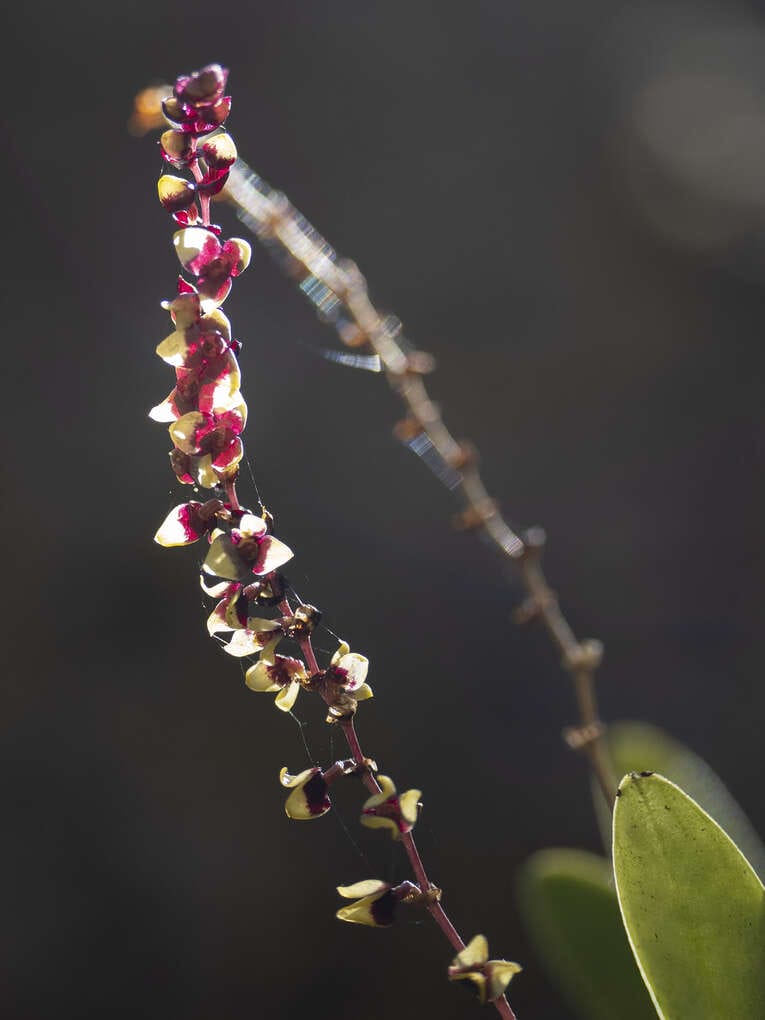
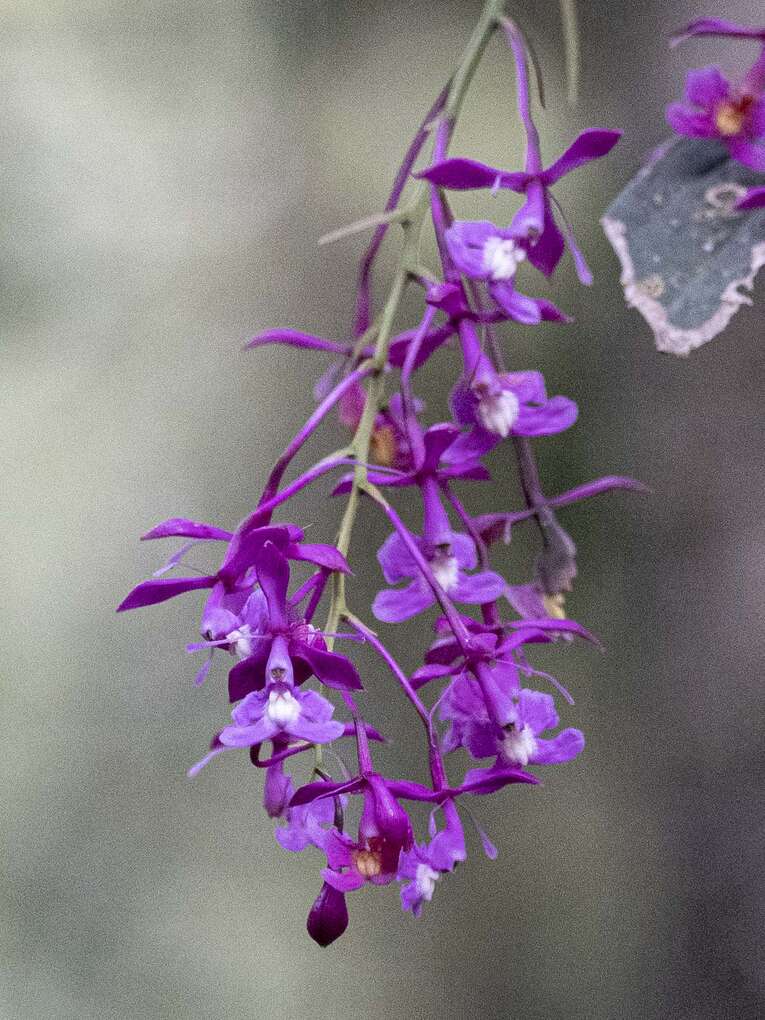
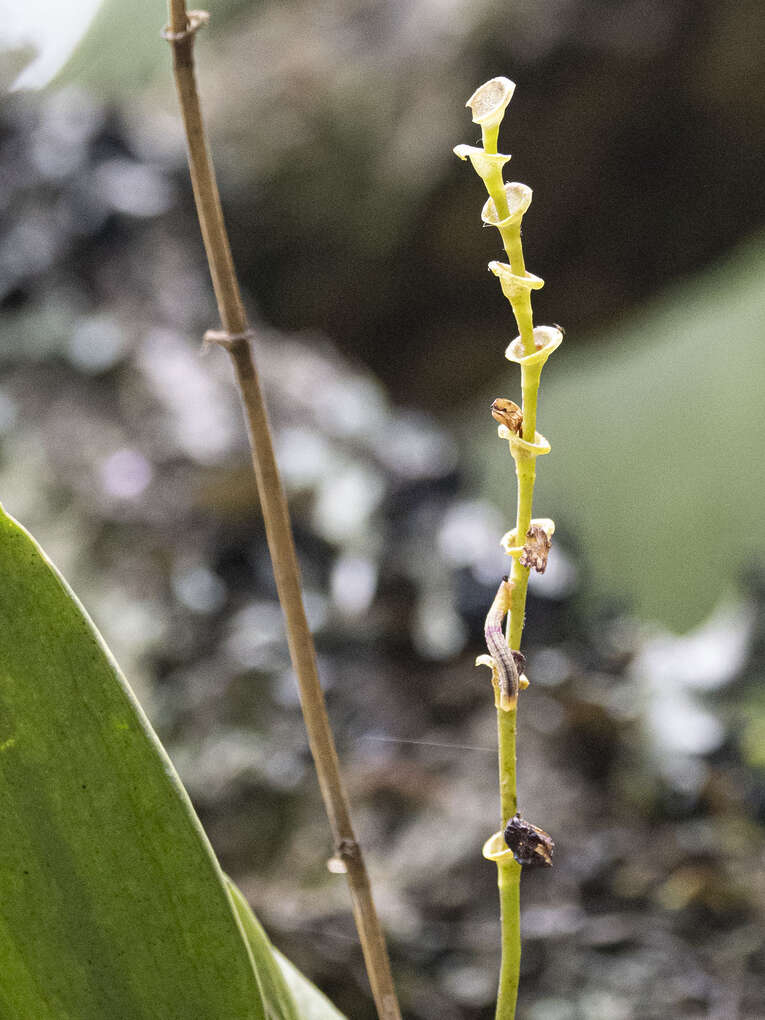
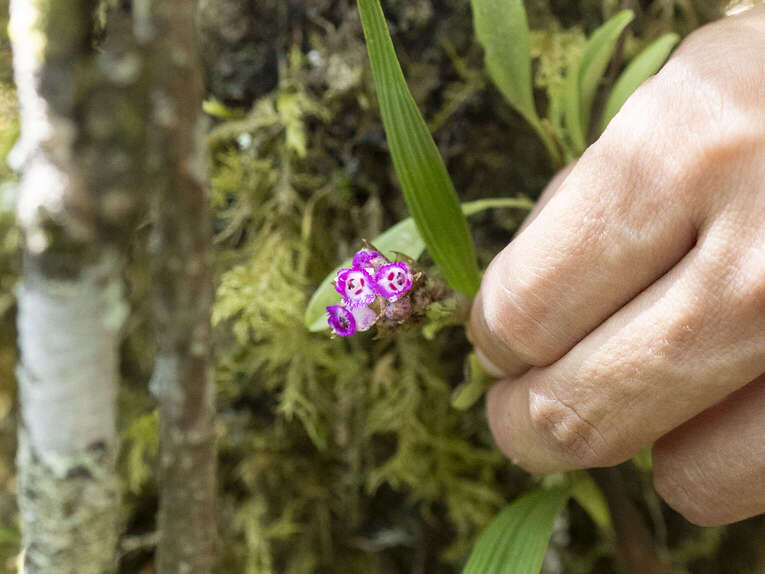
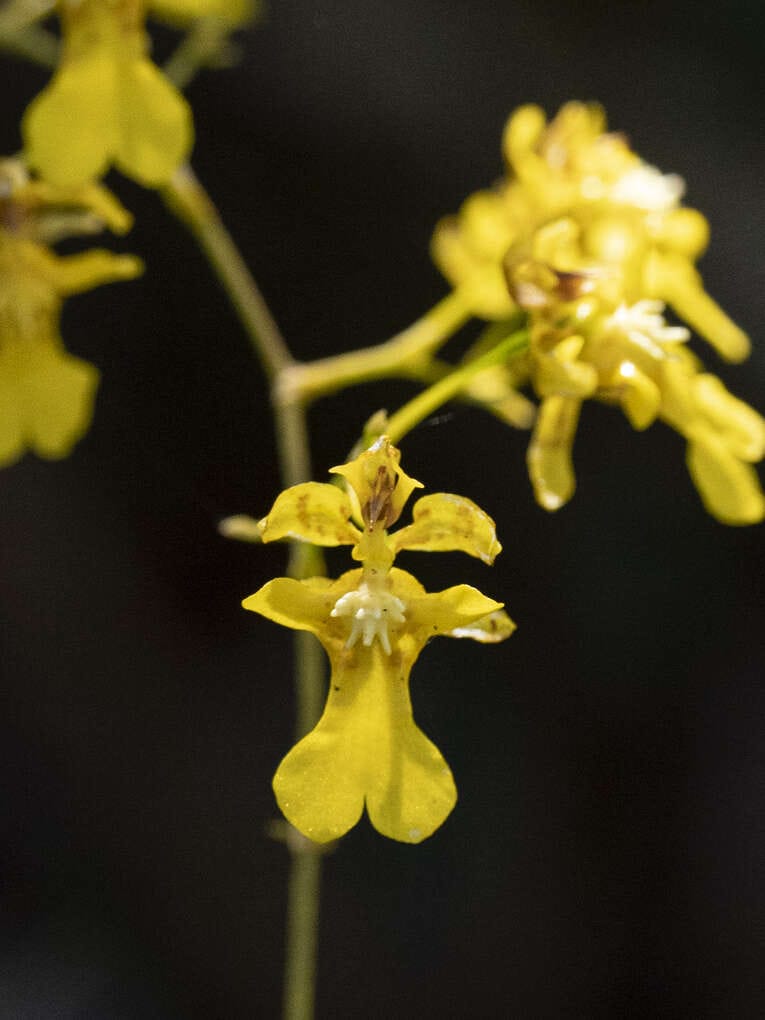
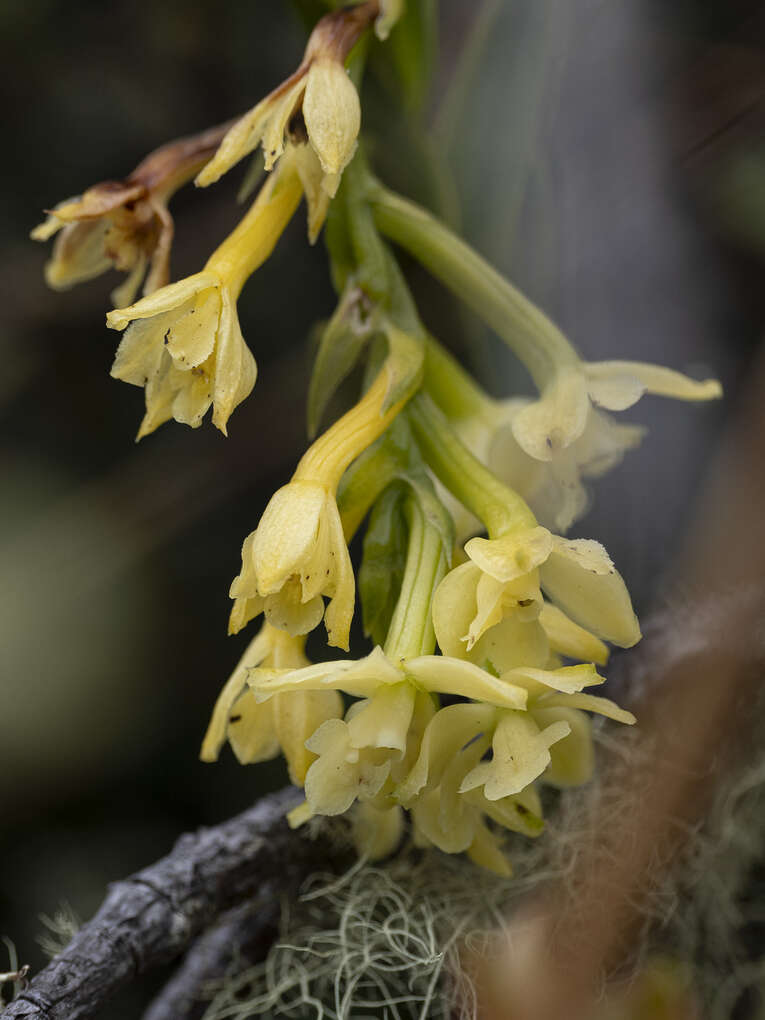
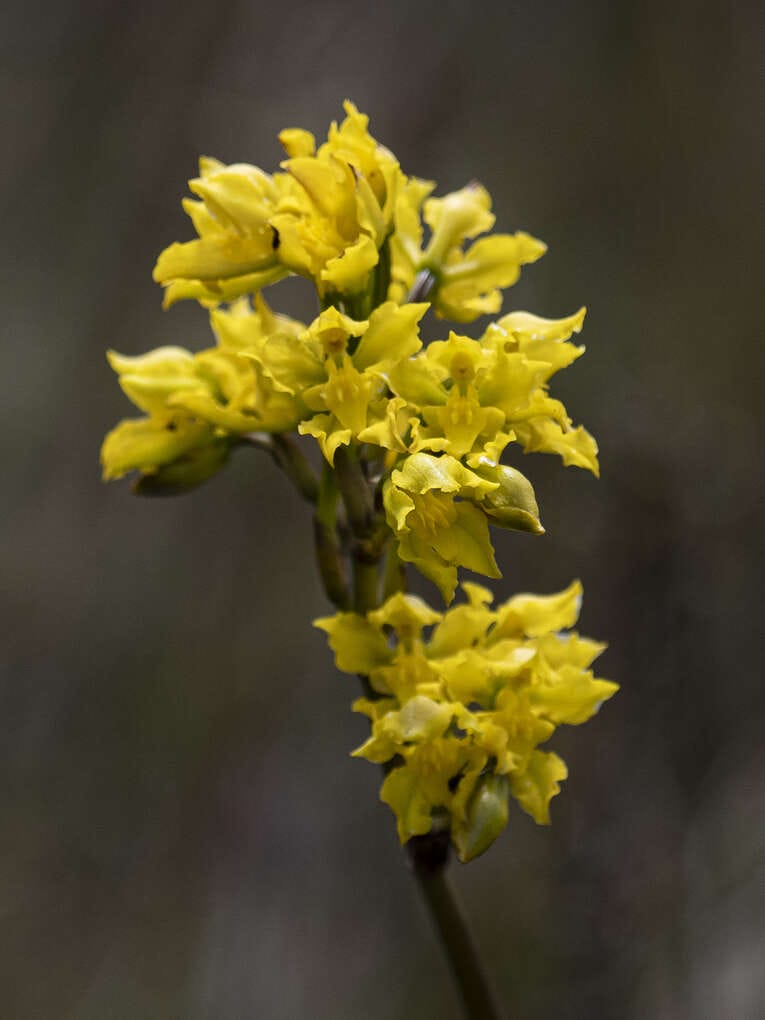
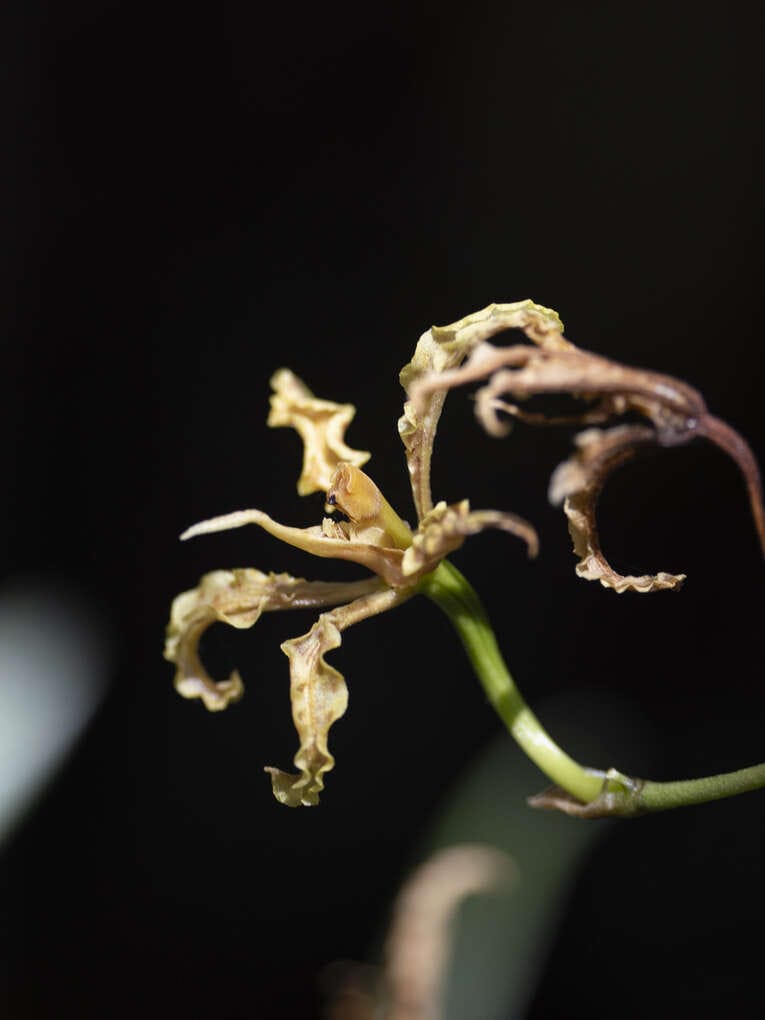
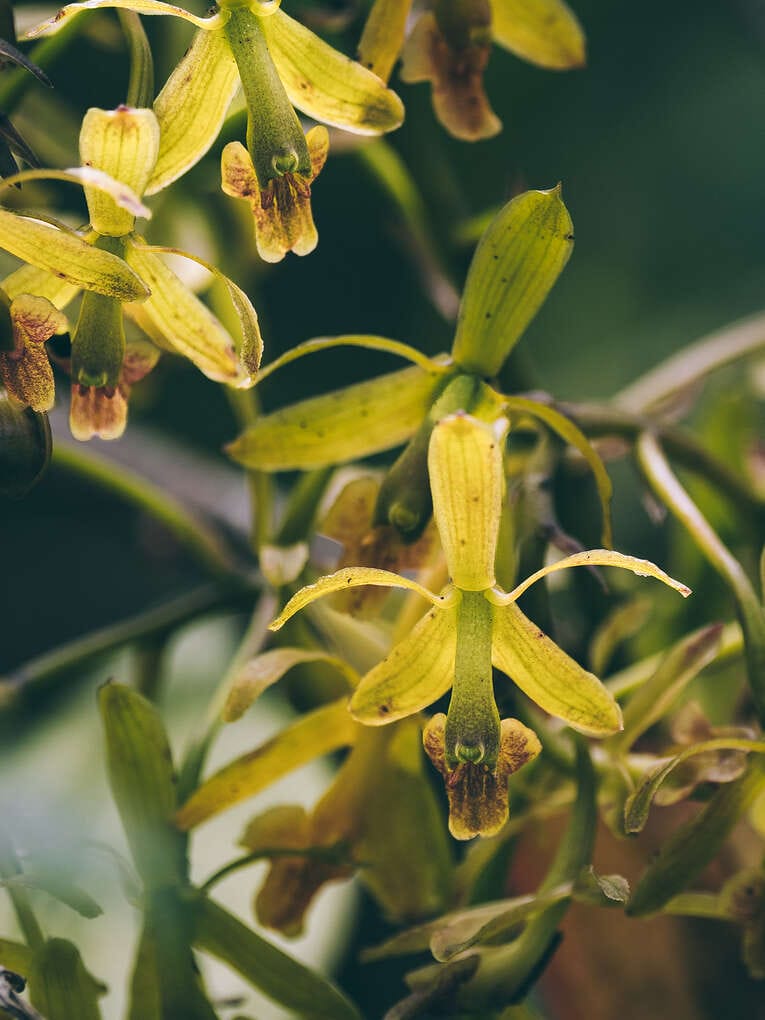
This Andean forest is also a chance to come across many bird species (luck was on our side), especially the famous Andean guan, an impressive bird by its size.
We eventually leave the forest and reach a much more open landscape where the vegetation is lower.
Tall grasses, shrubs, wild berries that Jacqueline lets us taste.
We try three types of blueberries from the Hesperomeles family, commonly known as Uva Camarona, Mortiño, Agraz…
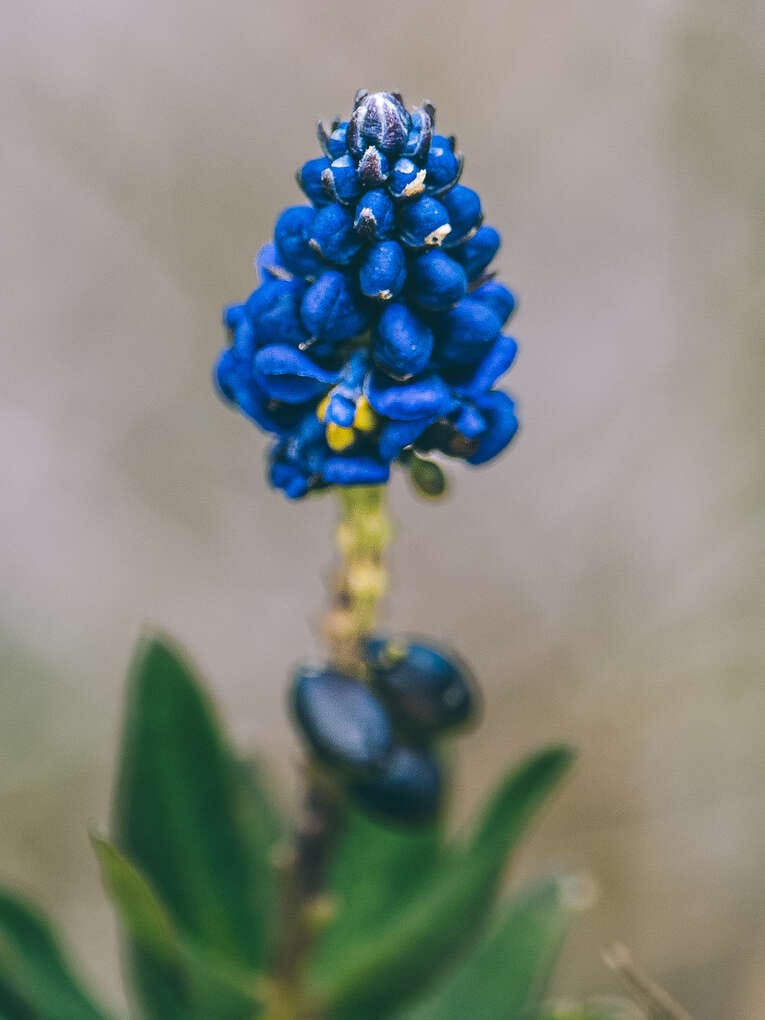
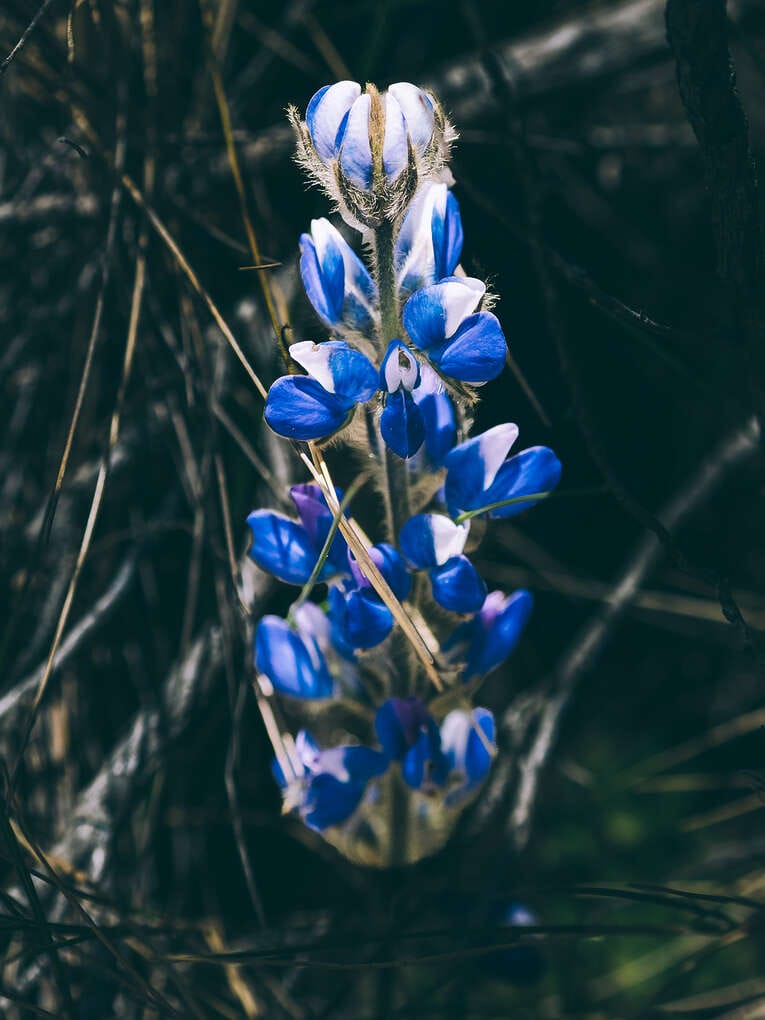
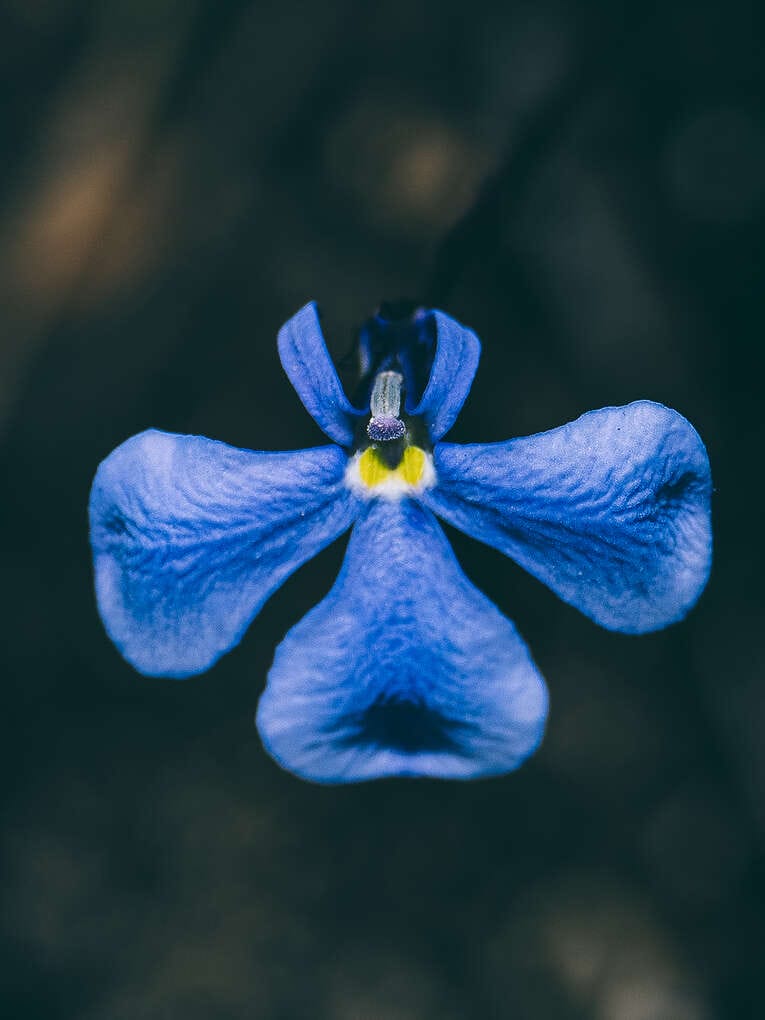
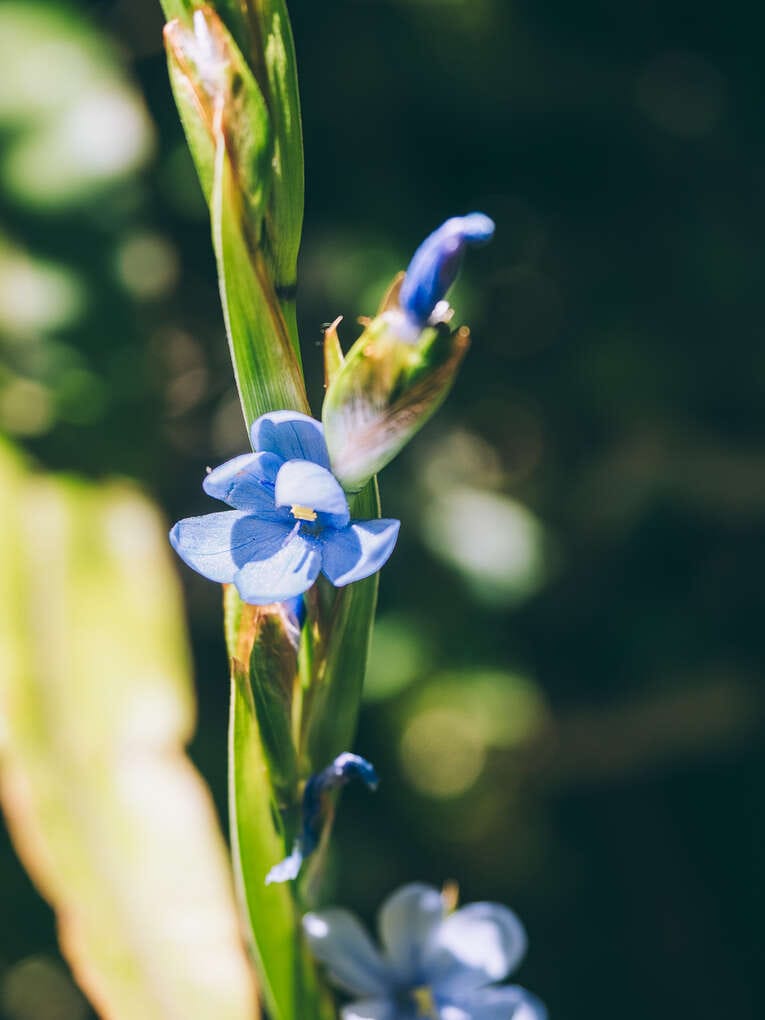
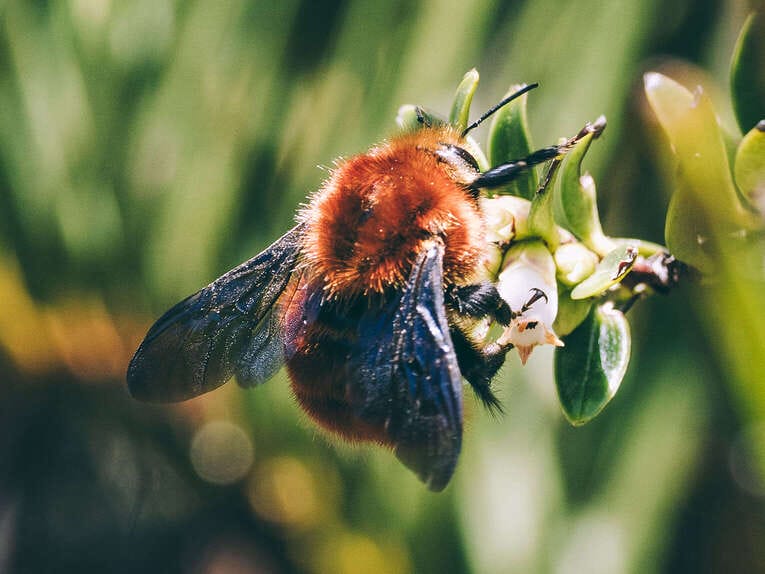
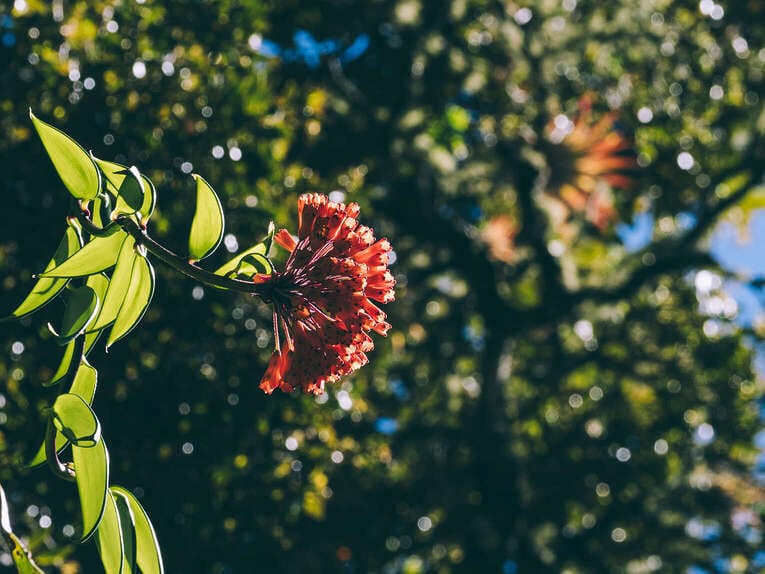
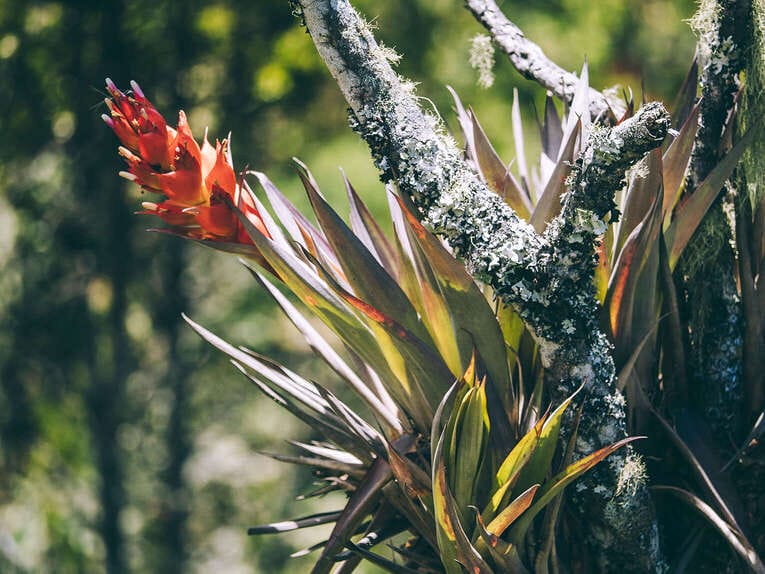
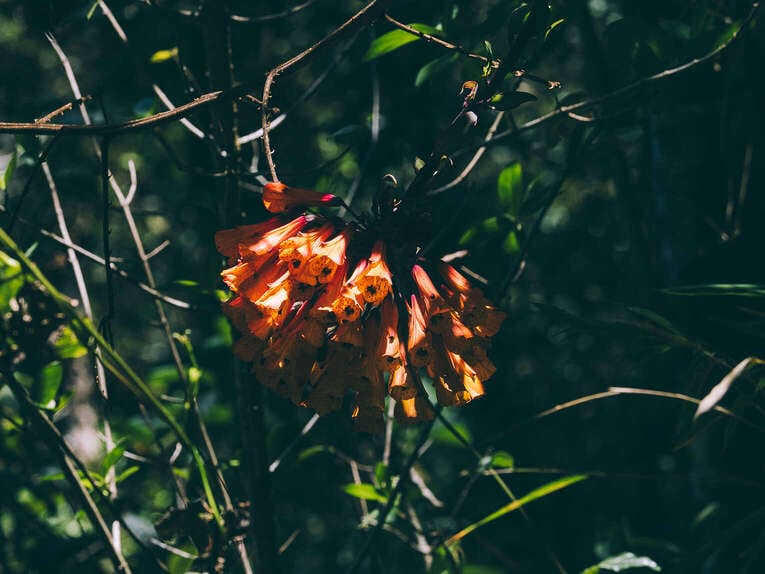
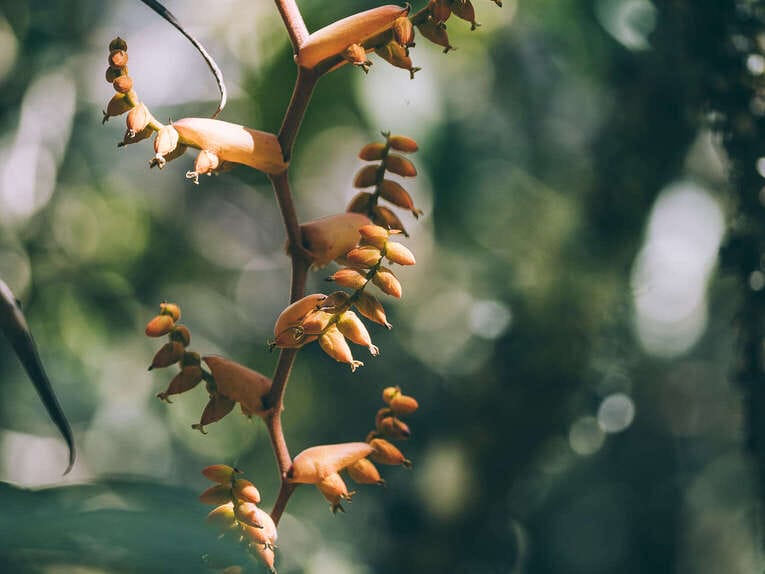
Here we face the hardest part of the hike, a tough section rightly named “La Pared”: The Wall!
It was (among other things) the issues related to this part of the trail that caused the park to close for 4 years.
Over time, hikers kept opening more and more paths and trampling the vegetation until they ended up destroying the entire ecosystem over a large area.
During the closure of Iguaque Park, it was decided to define a single trail, build stairs to make the passage easier — especially during the rainy season — and allow the ecosystem to regenerate.
Mission accomplished!
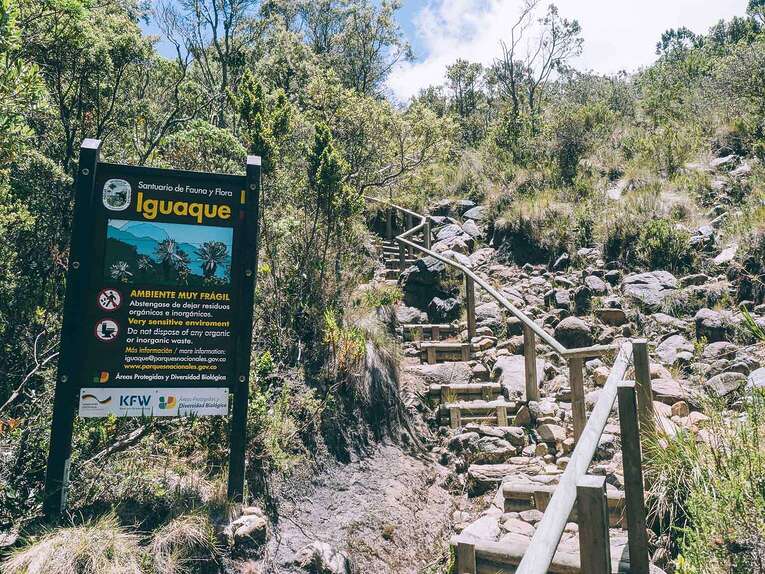
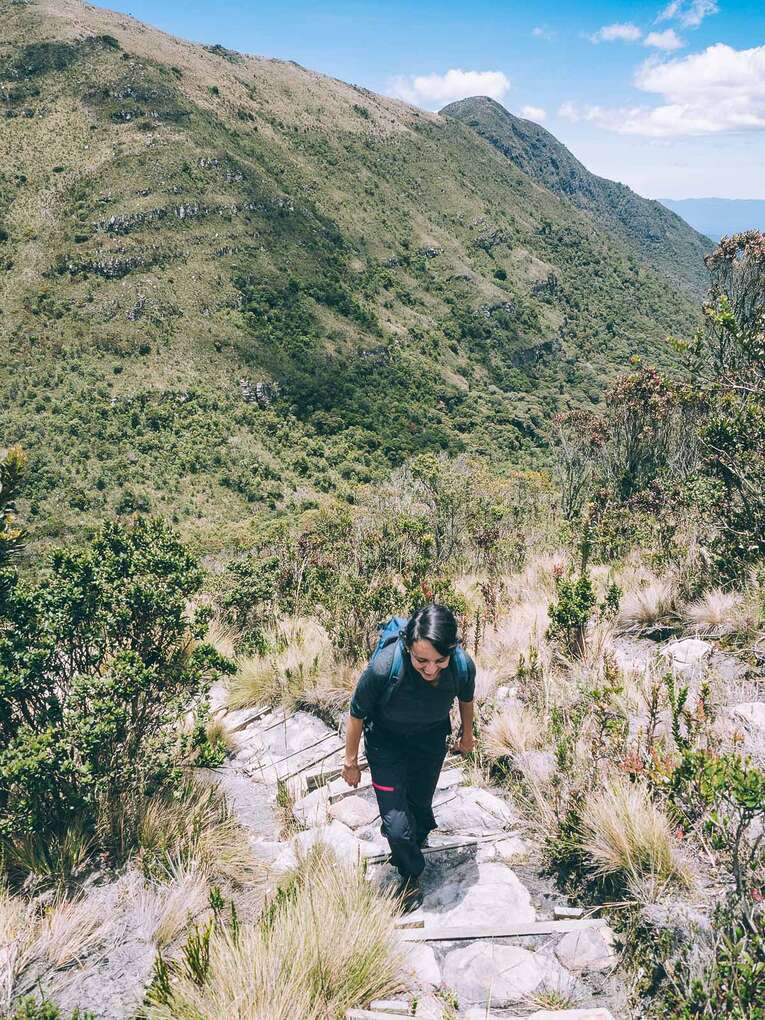
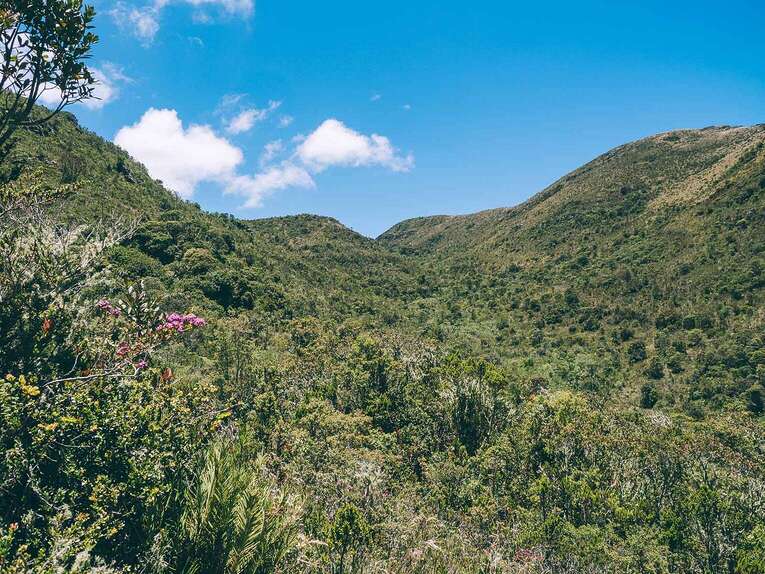
Once we reach the top of the stairs, we continue along the mountainside.
The trail becomes easier, and the landscape opens up onto the surrounding valleys.
We realize the human impact on the nearby mountains and how lucky we are to be here, in the middle of a preserved natural area.
Agence Coup de coeur
Official guide for hiking in Iguaque
Carlos’s agency is one of the few authorized to accompany hikers to the Laguna de Iguaque.
The magic of the Páramo: what you’ll see along the way
Hike in Iguaque Natural Park
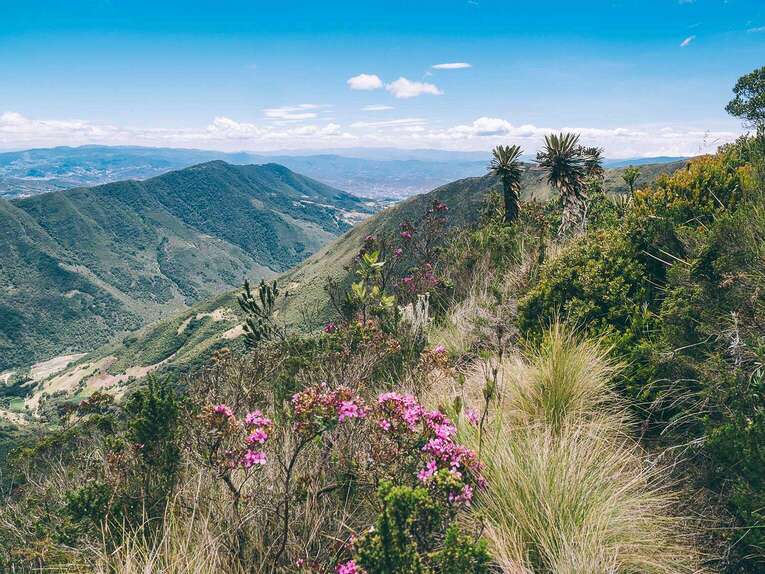
Then the frailejones become more and more present and we enter the sublime páramo landscape we love so much.
The Páramo de Iguaque surprises us!
We discover new species that we had never seen elsewhere in Colombia.
It turns out that Iguaque Natural Park is home to one of the rare “dry” páramos, and many endangered species of frailejones are recorded there.
Bon à savoir
The frailejones of Iguaque
There are 9 species of frailejones in Iguaque Natural Park:
- Espeletia glandulosus
- Espeletia pleiochasia
- Espeletia murilloi
- Espeletia barclayana
- Espeletia guacharaca
- Espeletia boyacensis
- Espeletia pleiochasia var socotan
- Espeletia garciae
- Espeletia tunjana
Espeletia Guacharaca surprised us in particular!
It is an endangered species of frailejon named after a musical instrument: the “Guacharaca”.
The Guacharaca is a percussion instrument (a stick that is scraped rhythmically) and is widely used in Vallenato music.
Now, this frailejon has surprisingly thick and rigid leaves, like wood, and when you run your hand over them, they knock against each other to make a sound similar to the Guacharaca!
The flowers, the frailejones, the wild berries, the tall grasses, and in the distance, a small cirque awaits us — and in the middle, a sacred lagoon…
The Laguna de Iguaque awaits us, surrounded by its founding myth…
Bachué, goddess of water, mother of humanity.
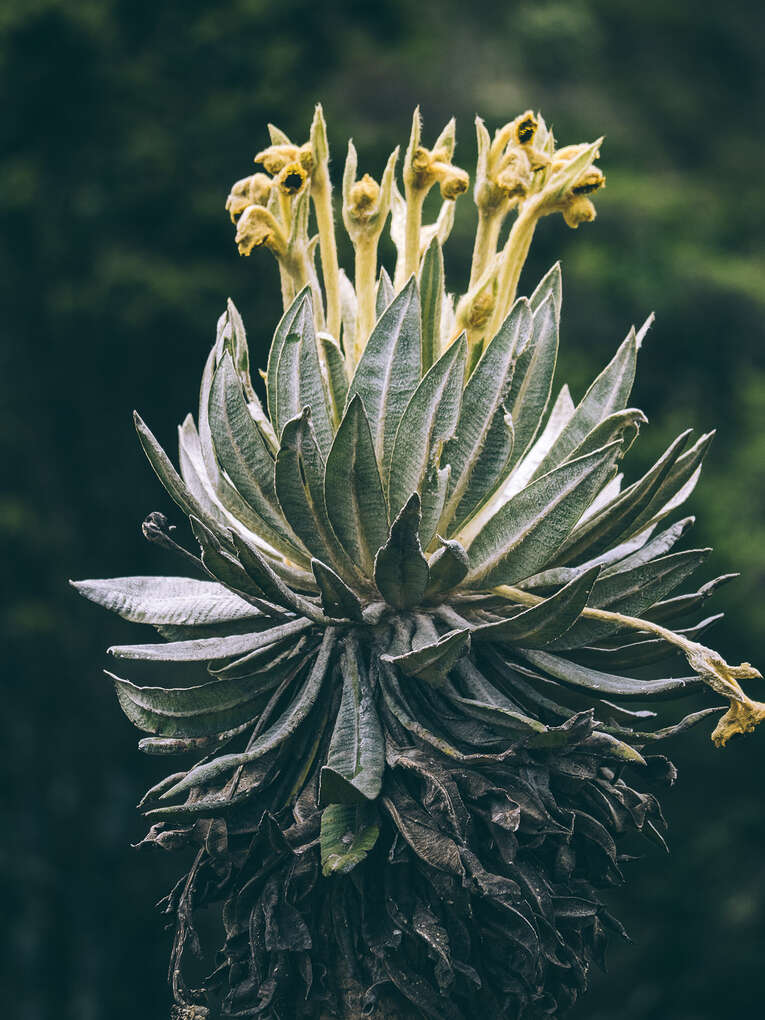
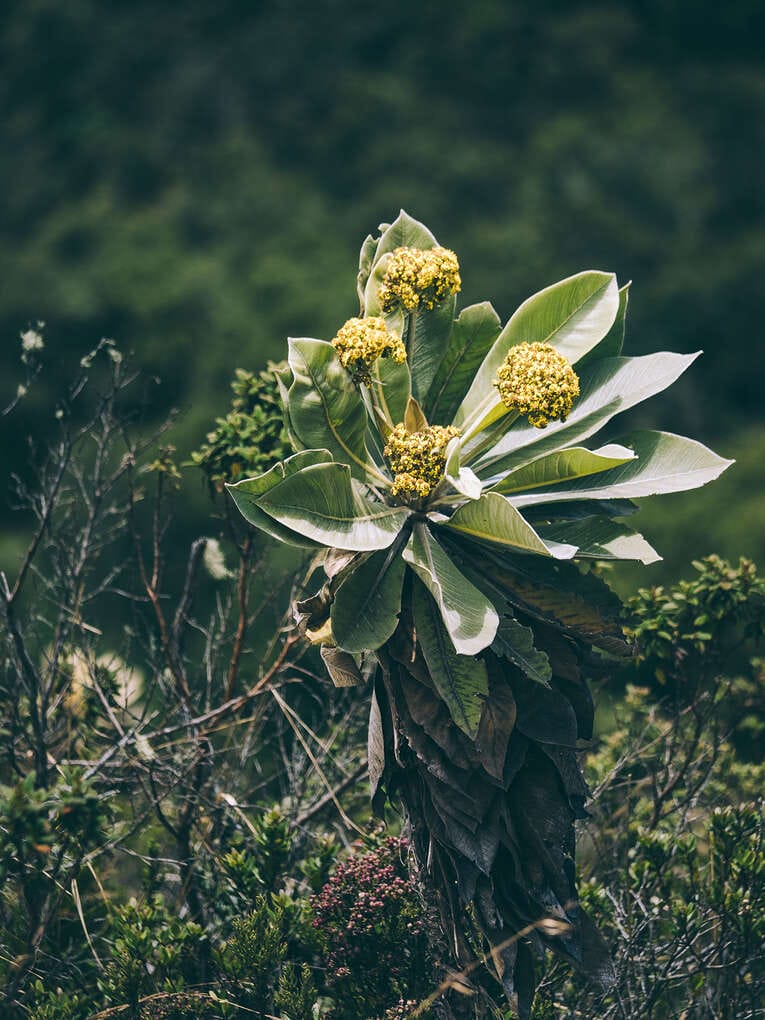
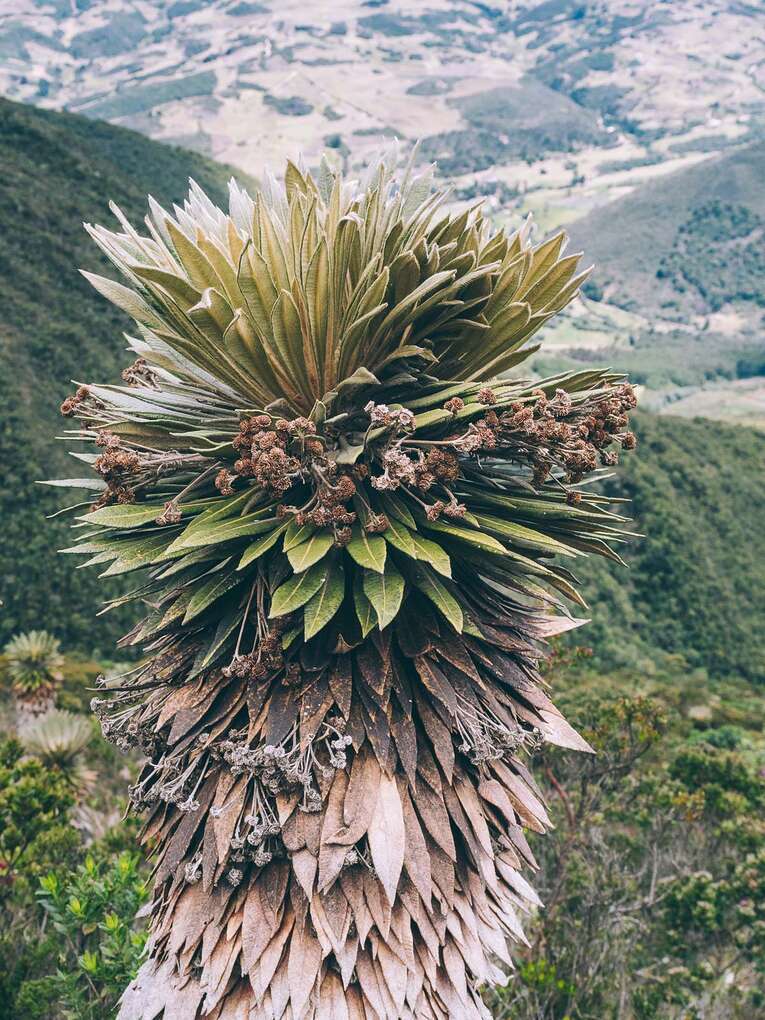
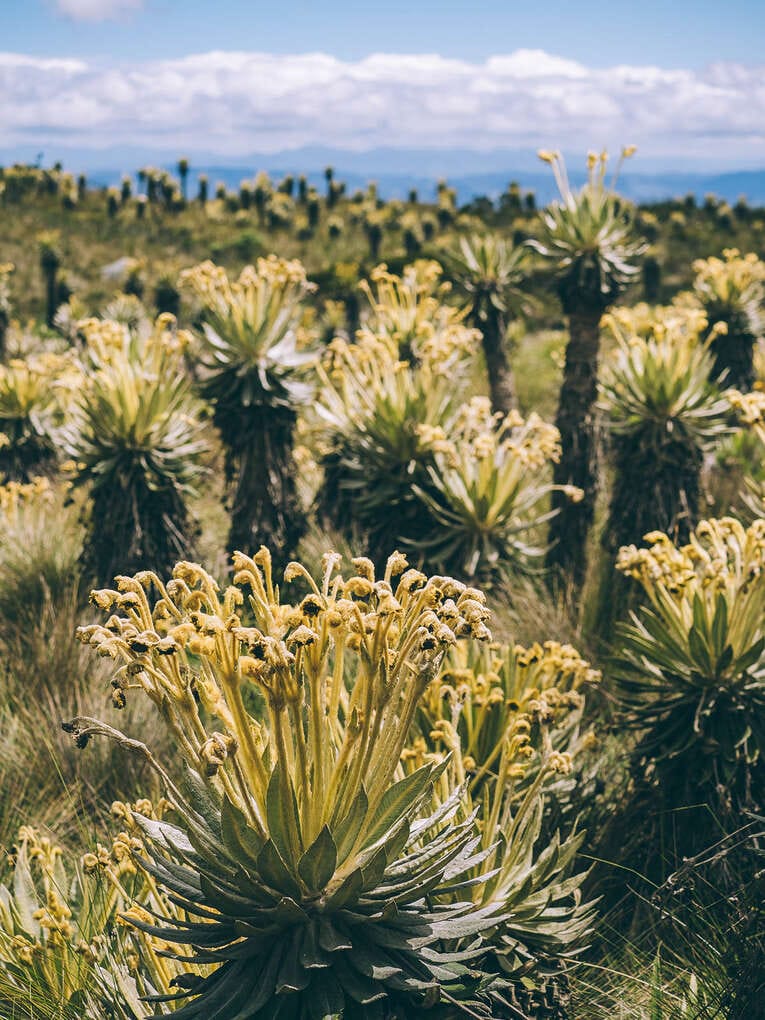
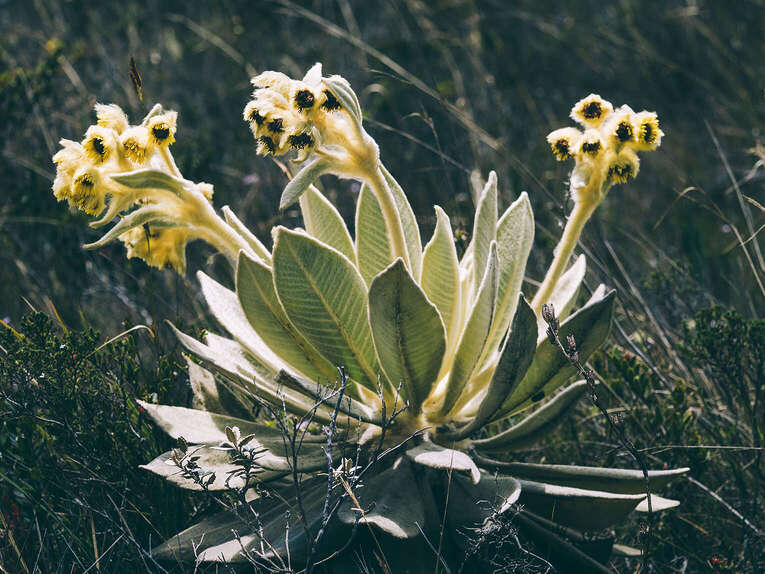
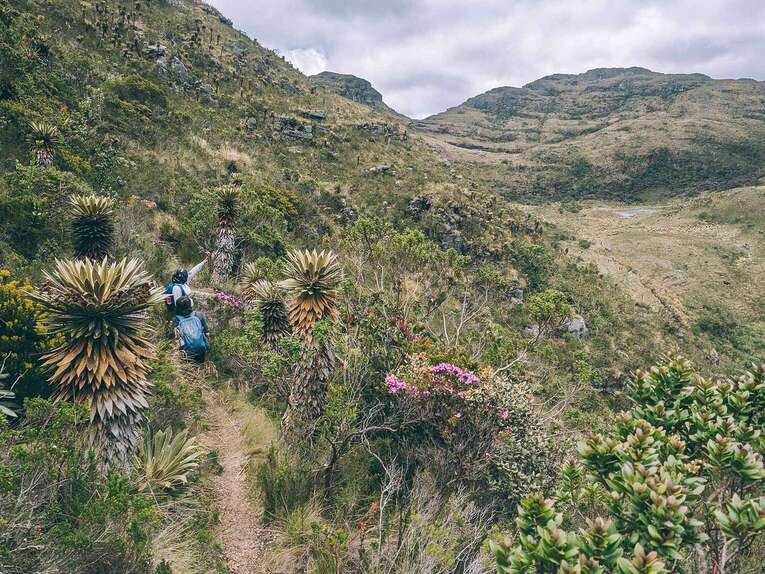
We go down toward the lake, cross this wetland area on wooden walkways, and arrive at a platform that is, to say the least, controversial.
In fact, contemporary Muisca communities consider this platform a sacrilege.
First, because the Laguna de Iguaque is a sacred place, and second, because it seems the platform was built on top of a large stone, which is itself considered sacred.
We understand both points of view.
On one side, the desire to protect this very fragile wetland and prevent visitors from walking anywhere is understandable.
On the other, respecting the sacred nature of the site for the Muisca communities is important.
This conflict between the national park authorities and the Muisca communities also contributed to the delay in reopening the park to the public for several years.
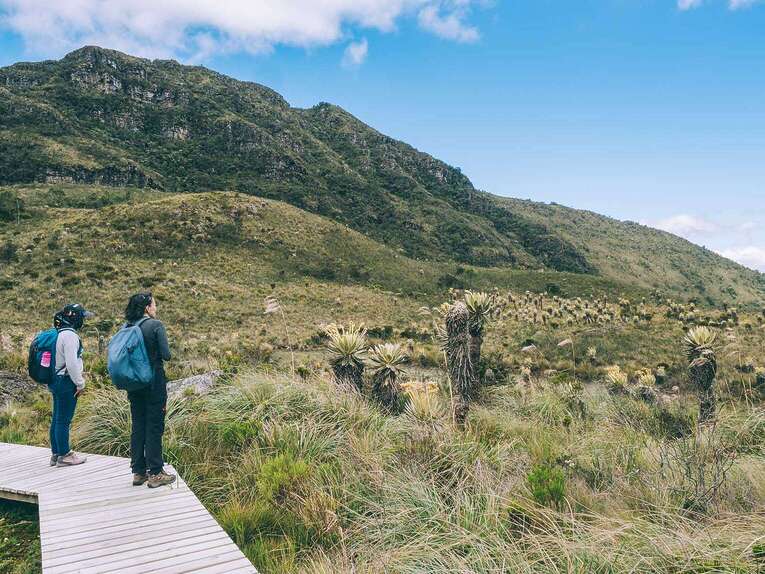
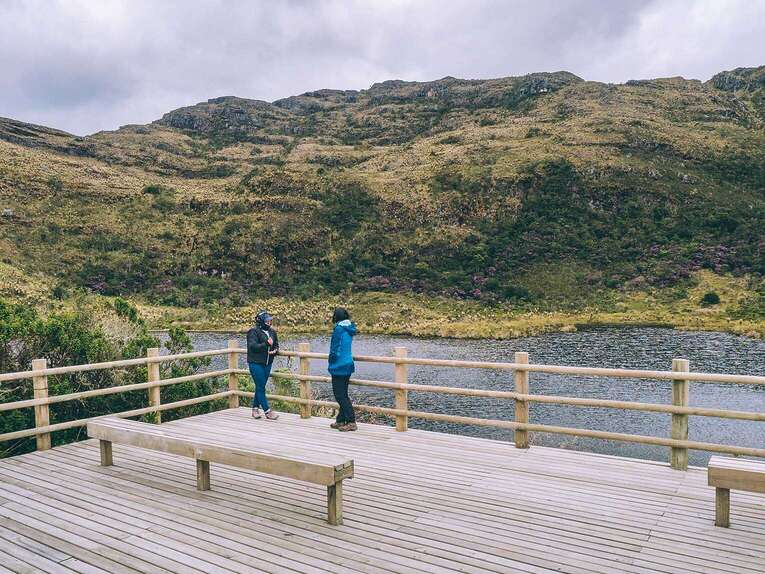
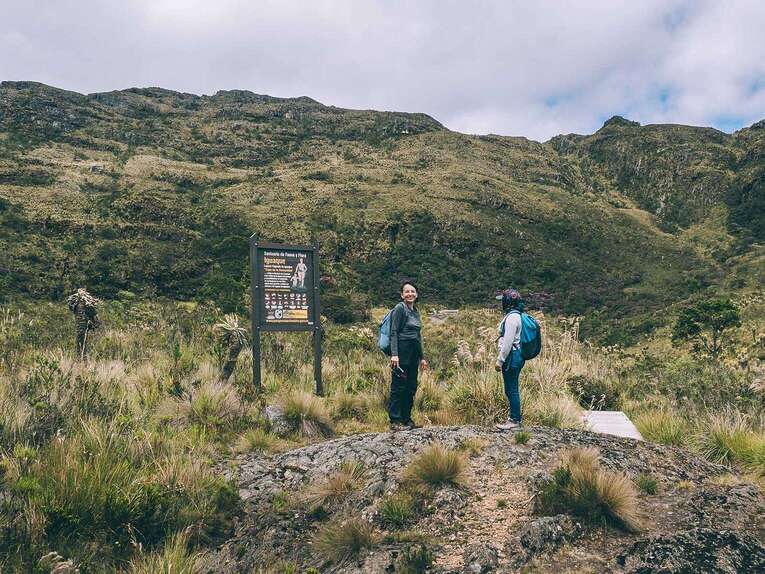
Good to know
The legend of Bachué and the Laguna de Iguaque
In the Muisca worldview, a pre-Hispanic people of the Colombian Andes, the Laguna de Iguaque is considered the cradle of humanity, from which the legend of Bachué was born.
There are different versions of the legend of Bachué, most of which come from the “Cronicas de la colonia,” books written by colonizers, most often by Catholic priests.
However, they all agree on the myth that Bachué came out of the waters of the Laguna de Iguaque to give birth to the Muisca people (and therefore to humanity), accompanied by the male figure of Qhuzha.
Bachué is considered the goddess of water (rain, lakes, rivers, oceans…) and was worshiped by the Muiscas, and the Laguna de Iguaque was part of the large network of Andean lakes where offering ceremonies were held.
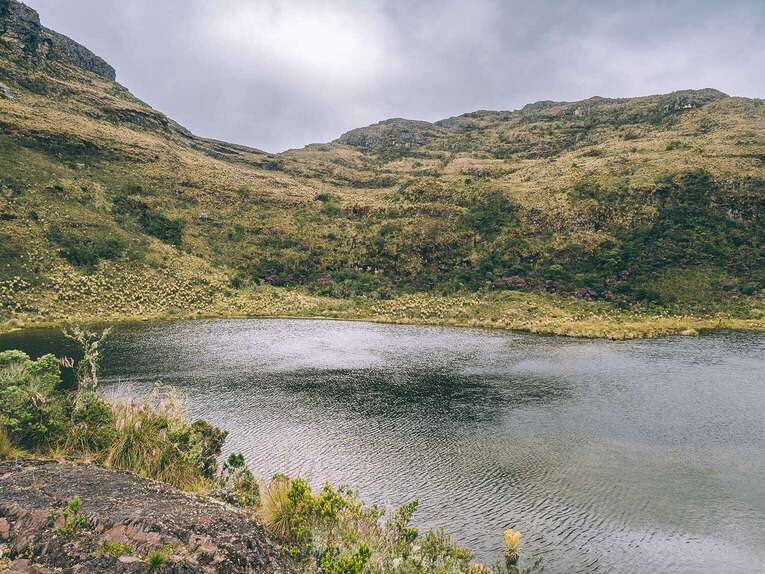
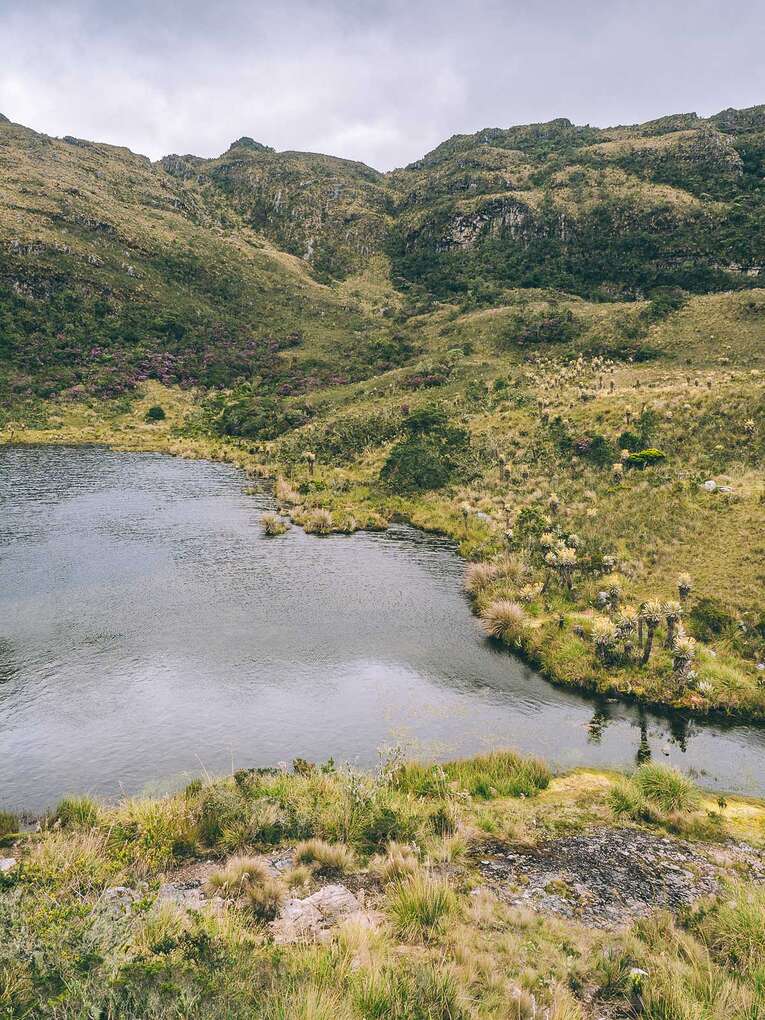
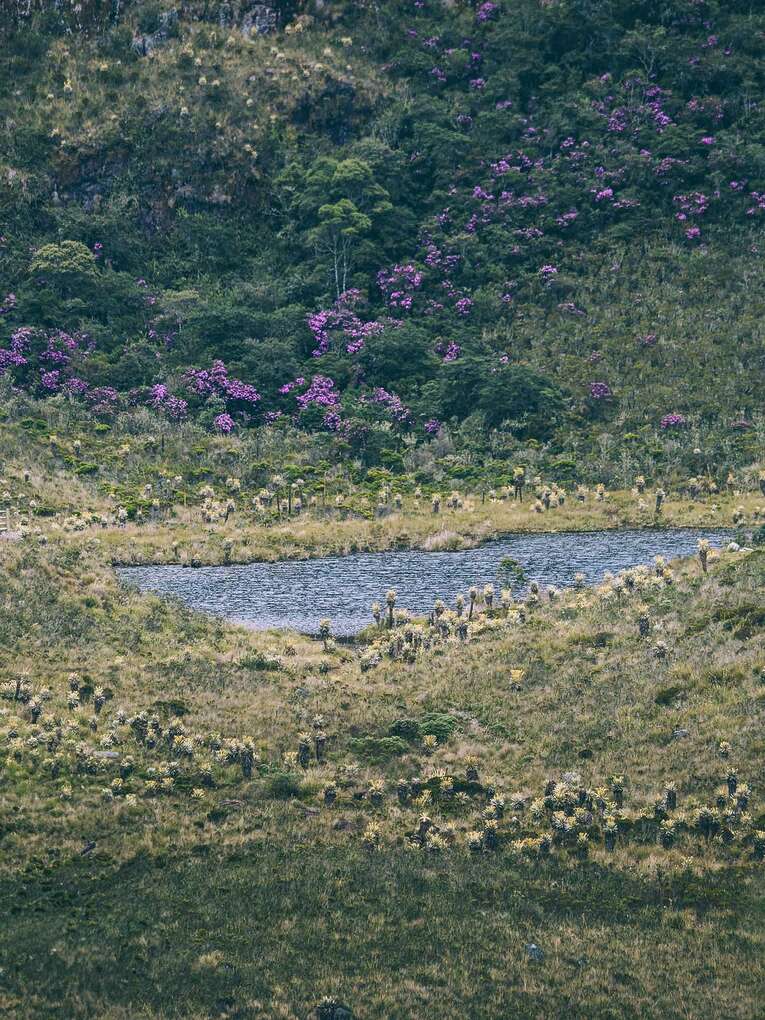
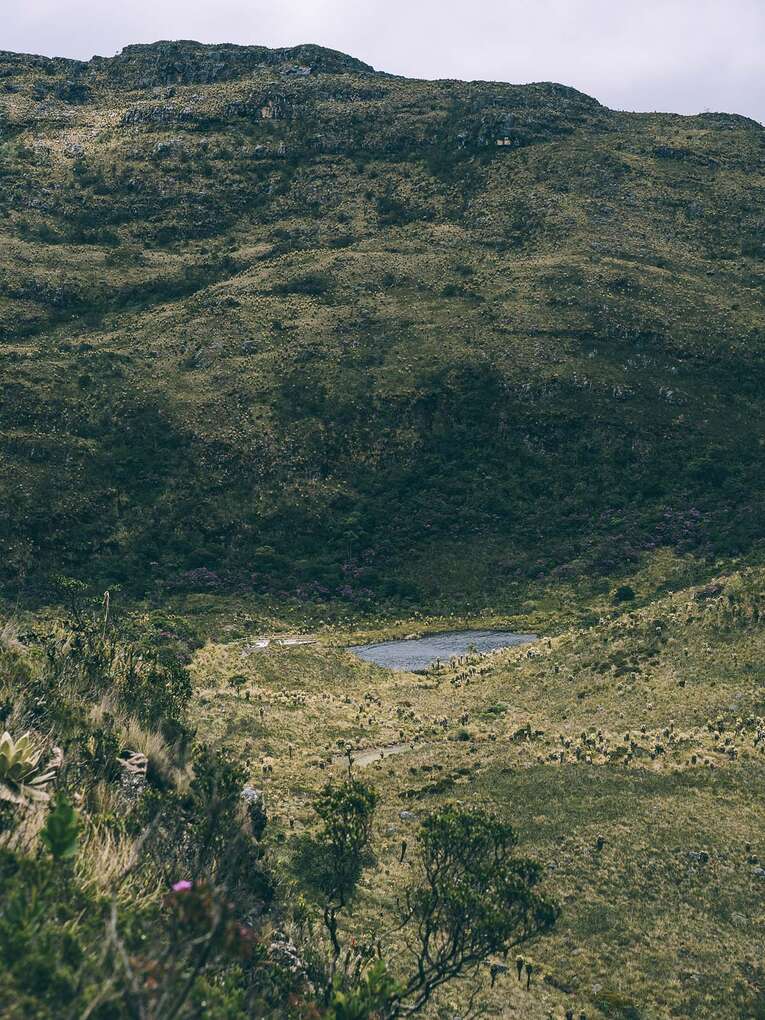
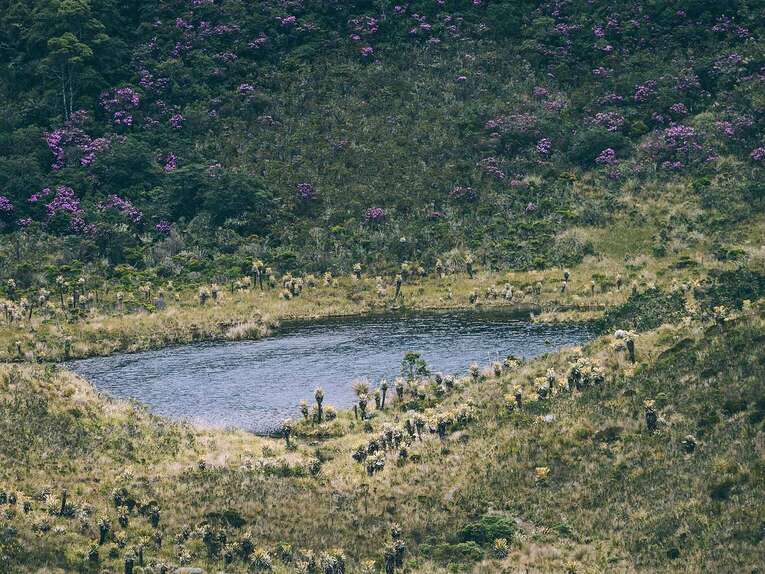
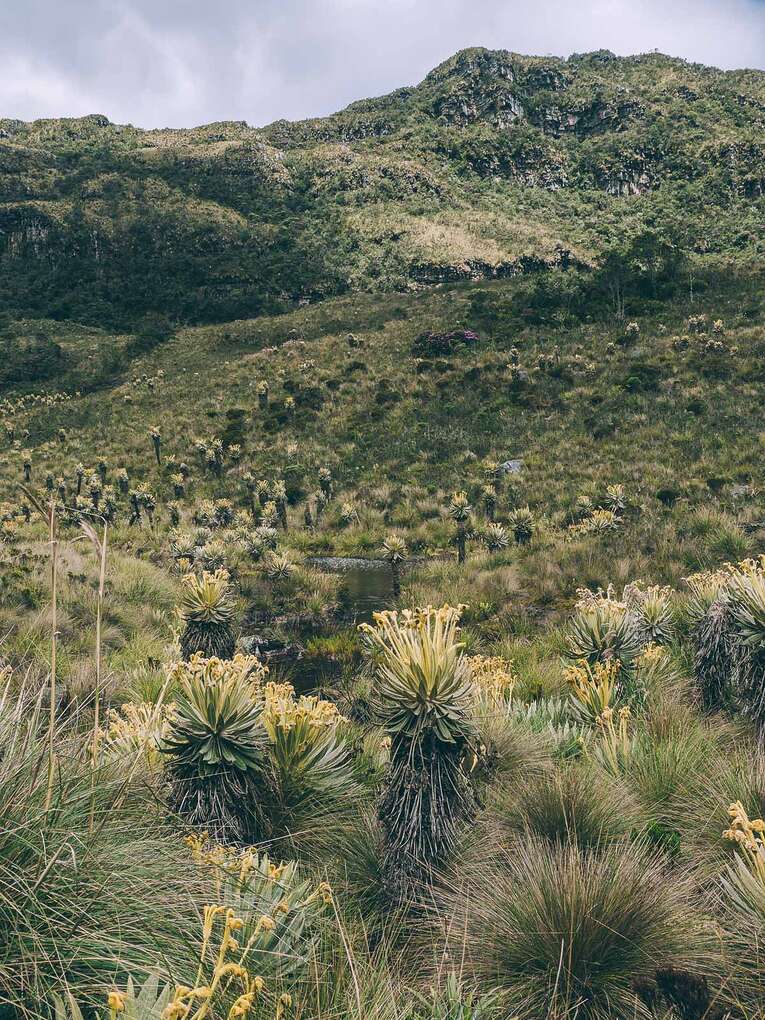
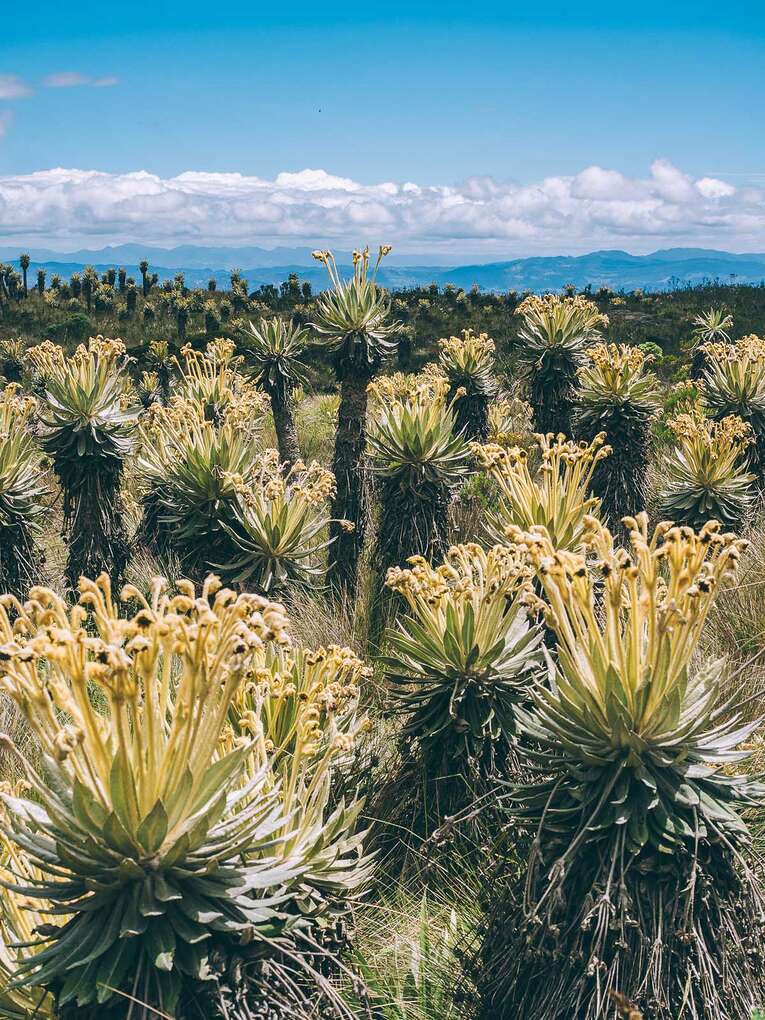
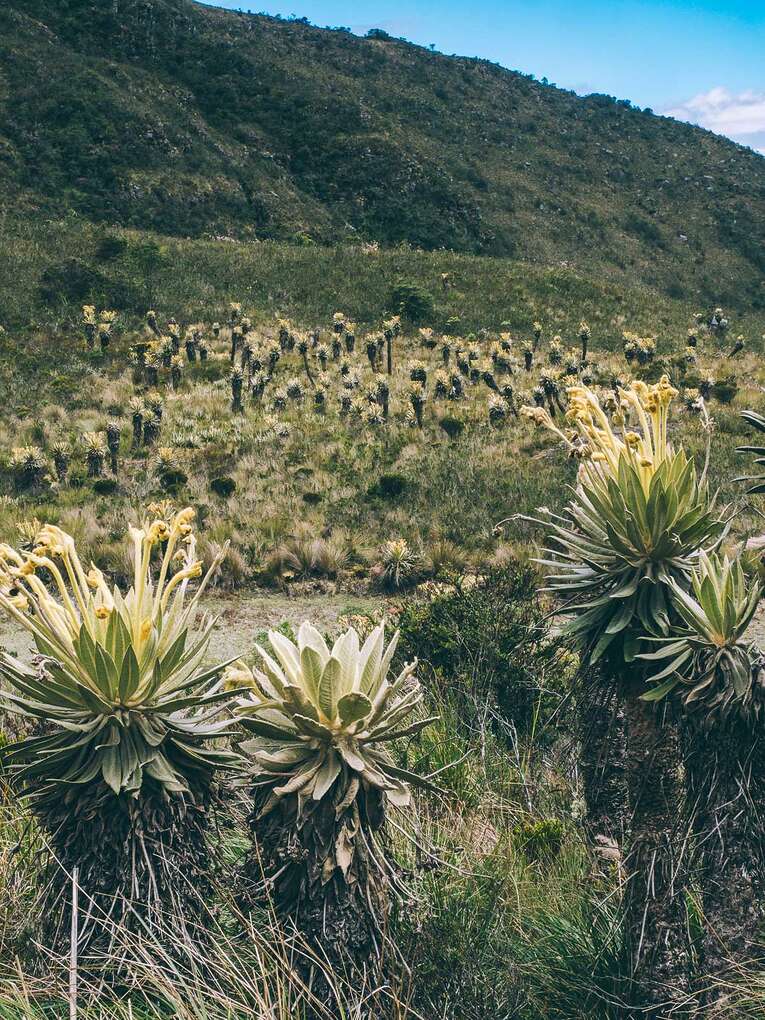
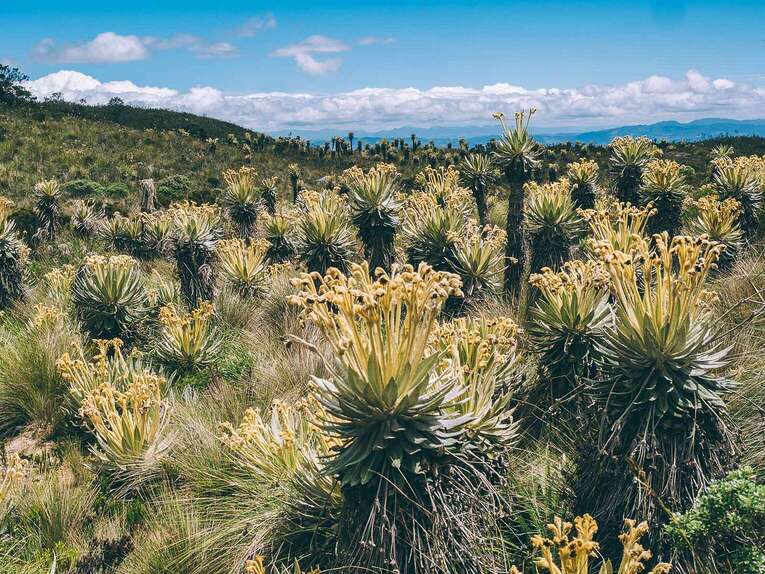
Up to that point, the weather had been incredibly generous.
But once we arrived at the Laguna, we barely had time to take out our picnic and get a bit of energy when the clouds appeared, along with an icy wind!
We had arrived in t-shirts, and we quickly put on sweaters, rain jackets, hats, and gloves to deal with the sudden drop in temperature.
Would Bachué be sending us a message?
We’re used to this unpredictable weather you find in the Colombian mountains, and in our opinion, it alone justifies the presence of a professional guide.
We pack up our things and start the way back.
The Bachué trail is a round-trip hike along the same path.
We wait with a bit of apprehension for the descent of the wall and its stairs that, as we know, are going to destroy our legs.
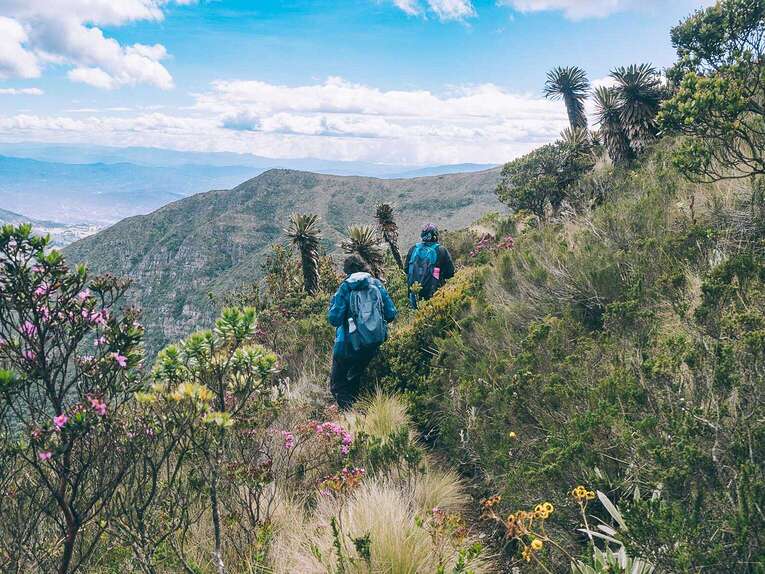
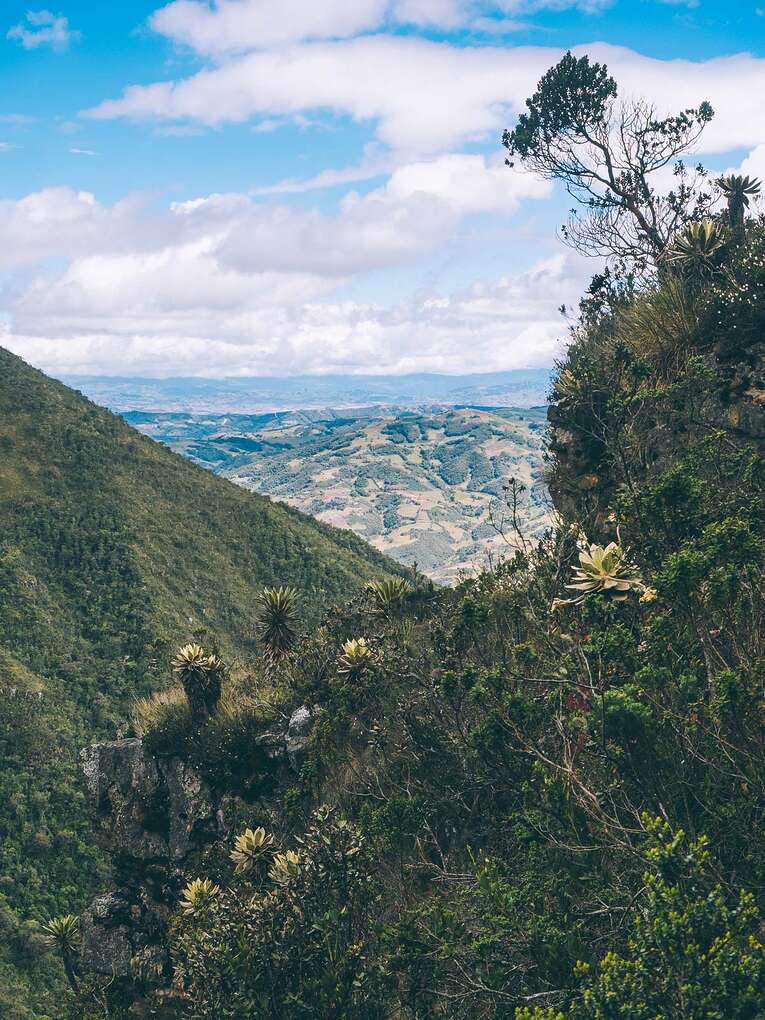
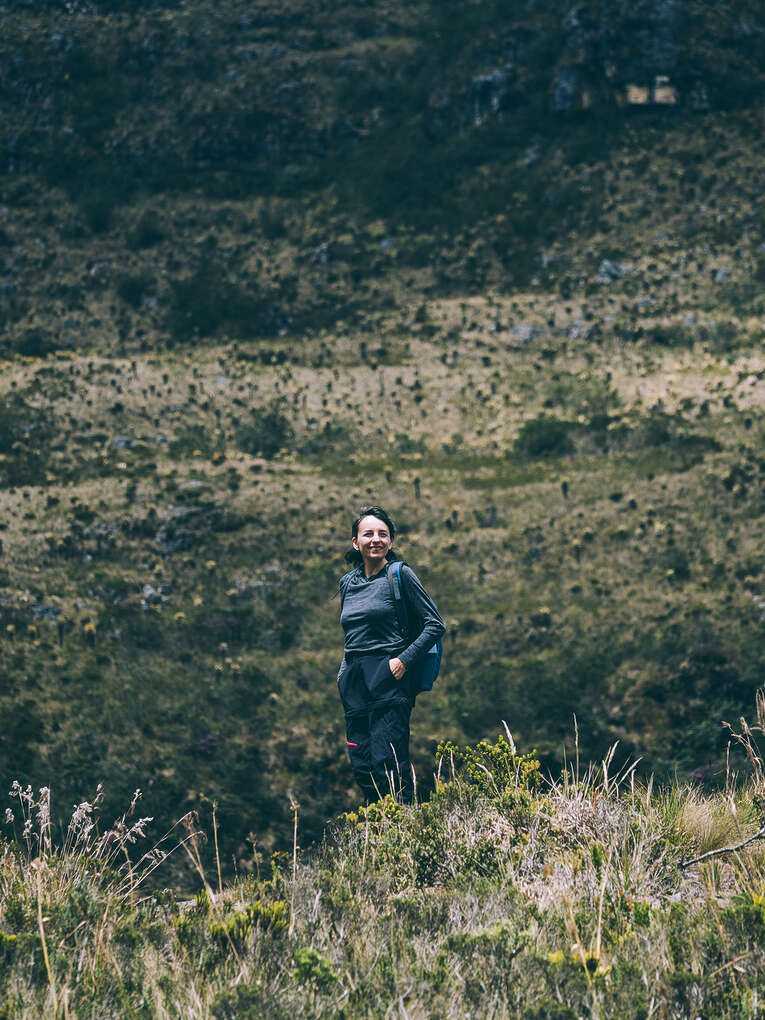
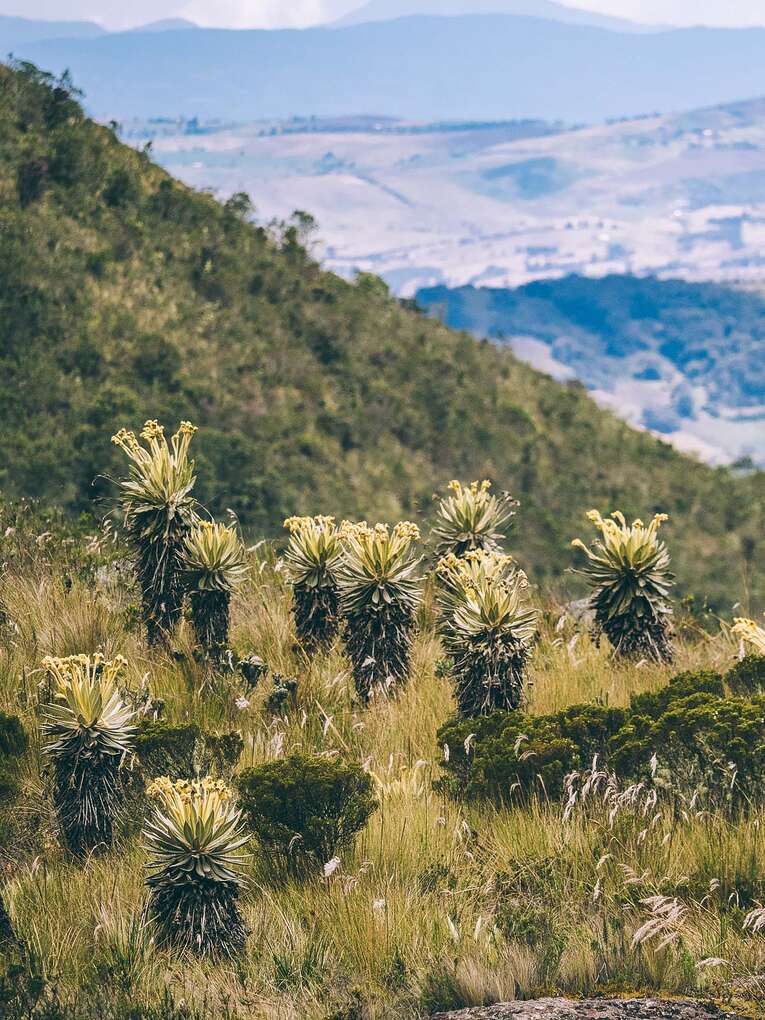
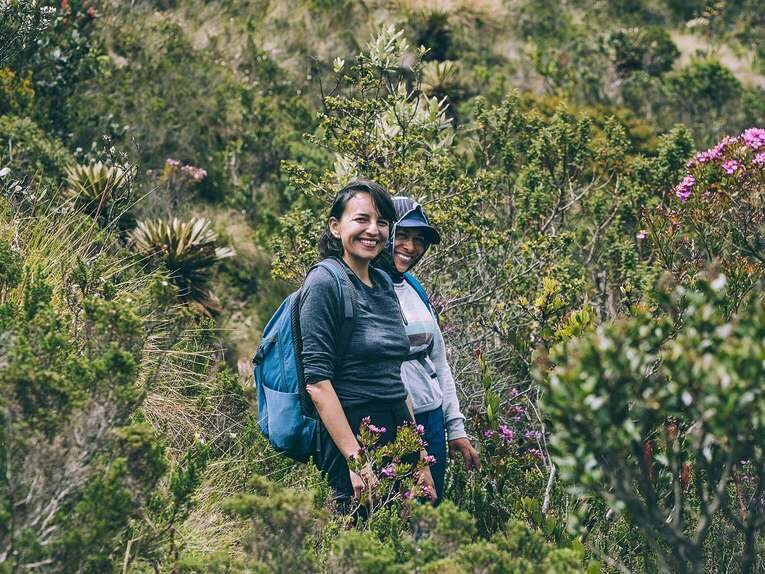
We love hiking, and we do it here from time to time to explore the páramos of Colombia, which we particularly enjoy, but we’re not serious athletes.
It’s the end of the trail in the forest, and we finally arrive at the car, tired but truly happy about the effort made, the moments shared with our guide Jacqueline, and the landscapes offered by these beautiful mountains of Iguaque.
Agence Coup de coeur
Guide officiel pour randonnée à Iguaque
L’agence de Carlos fait partie des rares à être autorisée à accompagner les randonneurs jusqu’à la Laguna de Iguaque
Ie Sue Trail
Hike in Iguaque Natural Park
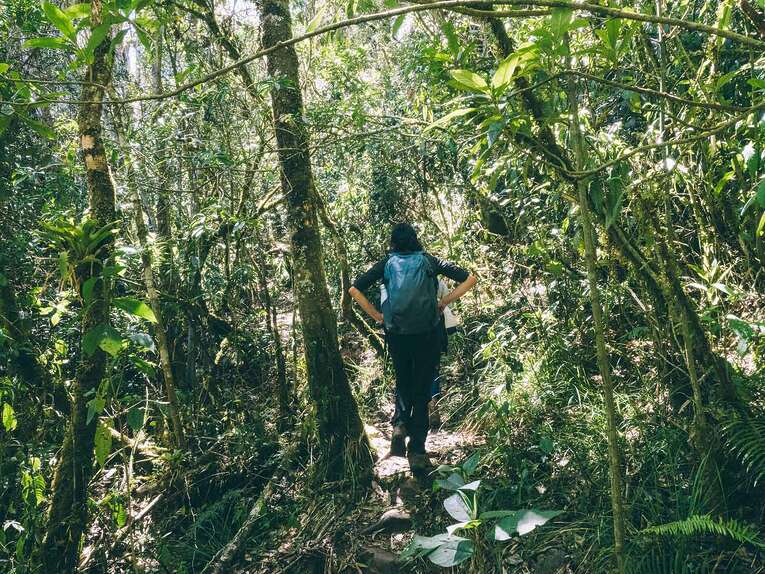
There are two trails open to the public inside Iguaque Natural Park: the “Bachué” trail we just mentioned, and the “Ie Sue” trail (which means bird trail in the Muisca language).
The “Ie Sue” trail is much easier than the “Bachué” trail, much shorter, less intense, and lower in altitude.
It’s a trail where you walk the whole time in the Andean forest.
The bird trail mainly lets you discover the local flora, especially the many species typical of the Andean forest, the orchids, the endemic species, and — with a bit of luck — you might see some birds.
Even though, in our case, we didn’t see many the day we went.
In general, 123 bird species have been recorded inside Iguaque Natural Park, along with mammals like the soche deer, the white-tailed deer, the tinajo, the armadillo, the coati, the ocelot, among others.
It’s important to keep in mind that they come out at specific times, some are nocturnal, and you always need a bit of luck to see wild animals.
That’s the law of nature!
The trail is pleasant, but of course, you won’t see the same landscapes as on the Bachué trail.
You won’t reach the páramo, which is found at a higher altitude above the Andean forest.
The Iguaque Lagoon, a beautiful hike
Hiking around Villa de Leyva
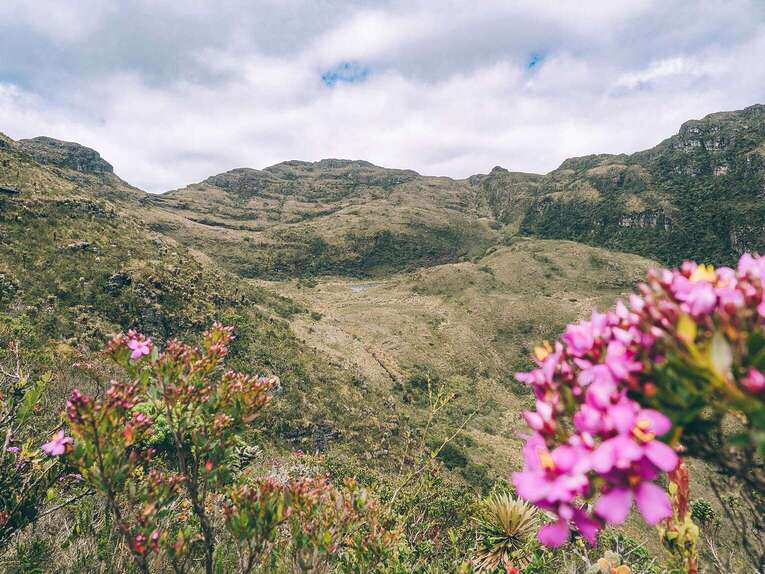
There are places we like without knowing exactly why. It’s not always for the view — or not only for that. Laguna de Iguaque is one of those places.
At the top, we’re out of breath, legs a bit weak. But it’s not only the landscape that hits something. It’s something else. Something inside. A mix of tired muscles… and calm. A calm that feels ancient.
People who laughed going up often come down quiet. That’s what the mountain does, maybe. It changes you, even if only for a moment.
If you’re looking for a hike near Villa de Leyva, go to the Iguaque Flora and Fauna Sanctuary. And to enjoy it fully, we recommend contacting our local partner.
Agence Coup de coeur
Guide officiel pour randonnée à Iguaque
L’agence de Carlos fait partie des rares à être autorisée à accompagner les randonneurs jusqu’à la Laguna de Iguaque
Why go with a local guide?
Landscape interpretation, safety, and Muisca mythology
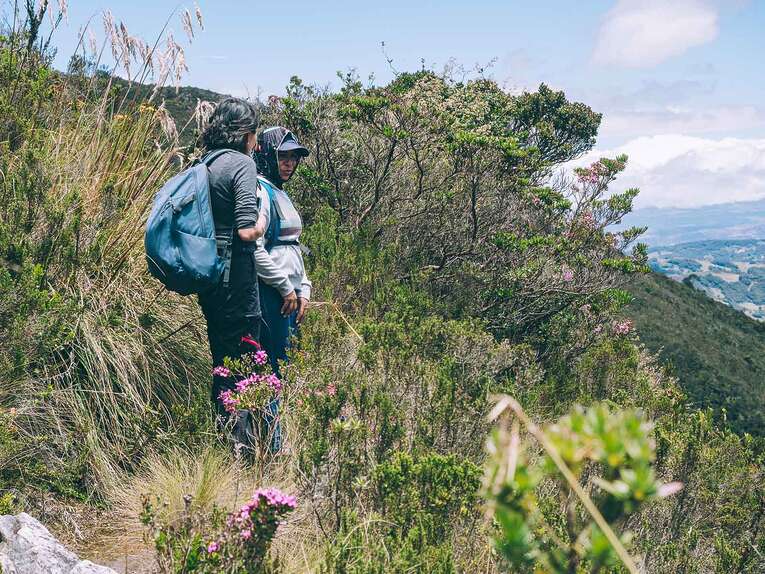
So yes, it’s mandatory. But beyond the rules, it’s mostly a real advantage.
Carlos’s agency, our local partner, is one of the few that are allowed to operate inside Iguaque Natural Park. Carlos is himself an official guide of the park, and when he is not available, he works with local guides and interpreters, like Jacqueline, our guide for the day.
Going with a local guide is not only about safety. It’s about seeing the landscape in a different way. The landscape has memory, the trees have a story, and the frailejones along the trail are not just strange plants. With a guide, each part becomes something to understand. You see where you’re walking. And you give something back to those who live here.
Many guides in Villa de Leyva come from nearby rural areas and have known the mountain since they were kids. They can read the weather, find birds in the trees, and spot orchids in the forest. They can also tell you about old traditions that are disappearing, and about Muisca beliefs — for them, the lagoon is a sacred place, the origin of the human world.
Having a guide makes the hike more human too. You talk, you laugh, you share. Jacqueline told us about her childhood, and the names people use for plants or birds, like the “¡Compra Pan!”, a bird whose song, she said, sounds like a grandmother shouting “Buy bread!”
Also, and this matters, it’s a direct way to support the local economy by paying fairly those who protect and live in this territory.
Responsible tourism
More travelers now want to go off the usual roads and still respect nature. Hiking in Iguaque is part of that. You walk in a protected area, with fragile plants and animals, and every step matters. It gives work to local guides from the nearby countryside.
Get in touch with a local guide
Iguaque Hike
Responsible tourism
Carlos’s agency, our local partner in Villa de Leyva, is one of the few agencies authorized to accompany hikers to the Laguna de Iguaque.
They always work in direct connection with communities and places that have implemented sustainable tourism practices and strategies focused on conservation.
They also give talks in Colombian schools, as well as conferences, photo exhibitions, publications, and audiovisual projects, as part of an environmental education approach.
Practical information
Price and hours
- Entrance fee: $76.000 COP (foreigners)
- Parking fee: $19.000 COP (car)
- Mandatory insurance: $3.000 COP
- Regulated hours: departure between 8:00 and 10:00 a.m. max for the Bachué trail, departure between 8:00 a.m. and 2:00 p.m. for the Ie-Sue trail
Park closing time: 5:00 p.m. - Advance booking required: reservas.iguaque@parquesnacionales.gov.co or WhatsApp +573207103675
- Authorized guide mandatory
Topography
Bachué trail
Hike to the Laguna de Iguaque
- Distance: 10 km round trip – around 6 / 7 hours depending on physical condition
- Elevation gain: 800 m D+/D-
- Starting altitude: 2.846 m
- Maximum altitude: 3.640 m
- Level: Demanding
Ie-Sue trail
Short hike in the Andean forest
- Distance: 2 km round trip
- Elevation gain: 100 m D+/D-
- Starting altitude: 2.850 m
- Maximum altitude: 2.950 m
- Level: Easy
Gear and recommendations
- Waterproof hiking shoes
- Waterproof and windproof jacket, layered clothing, gloves, and hat
- Sun protection (hat, sunglasses, sunscreen)
- Water (minimum 2 L) + snacks
- Hiking poles if possible
Good to know
- The altitude can cause headaches or shortness of breath: walk slowly.
- Swimming in the lagoon is prohibited (sacred site).
Best season for hiking
- From December to March and from July to September (dry season).
- Avoid rainy periods when the trails can become slippery.
How to get to Iguaque
From the center of Villa de Leyva, you need to take the road toward Arcabuco until you reach the place called “Casa de Piedra.” Half of this road is unpaved. Once you reach Casa de Piedra, turn and go up a dirt road until you get to the entrance of Iguaque Natural Park (Administrative Center Carrizal).
Be careful: on Google Maps the park entrance is not correctly marked, so it’s better to enter “Casa de Piedra” and then follow the road. During the rainy season, it’s recommended to use a suitable vehicle, especially for the stretch between Casa de Piedra and the park entrance.
- Distance: 15 km
- Duration: about 1 hour
There is public transport to Casa de Piedra (bus from the Villa de Leyva Terminal), but it won’t take you to the park entrance.
From Casa de Piedra, you will need about 2 hours on foot to reach the park entrance (3 km and 300 m elevation gain), but be careful: you won’t be allowed to enter if you don’t have a reservation and if you are not with a guide.
If you don’t have a car, the easiest option is really to organize your visit with a guide or a local agency.
Where to stay in Villa de Leyva
Villa de Leyva

Hostal
Nibiru Hostal
A well-decorated hostel with great facilities at a great price. The house is modern, clean, the breakfast is top-notch and the owners are very friendly!
Villa de Leyva

Hostal
Hostal Casa Beija Flor
Communal areas that make you want to chill out, clean rooms and bathrooms, a friendly welcome… that’s what you’d expect from a good hostal!
Villa de Leyva

Hotel
Hotel Casa Cantabria
A hotel recommended by our readers, located two blocks from Villa de Leiva’s main square, this beautiful colonial house offers excellent value for money. Special mention for the small roof terrace!
Villa de Leyva

Hotel
Hospederia Villa de los Saenz
This address was recommended to us by Angélica’s uncle, who recently tried it out. The hotel is very close to the main square, which is good, it’s clean, traditionally decorated and reasonably priced.
Villa de Leyva

Hotel
Hotel Arco Iris
This is where we stayed during our stay at Villa de Leiva. A beautiful, romantic hotel high above the village, with large bay windows overlooking the surrounding mountains, terrace and fireplace if required… we loved it. The hotel is off the beaten track, so you’ll need to take a cab to get to the village.
